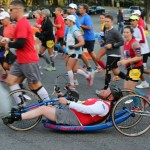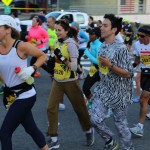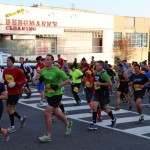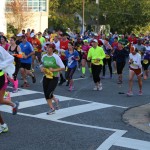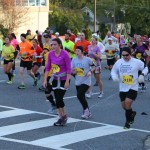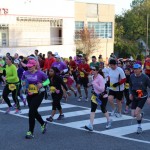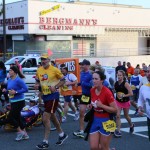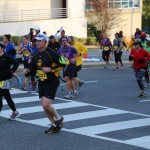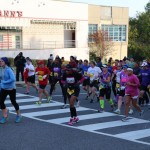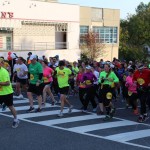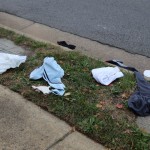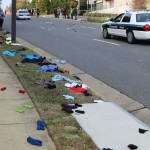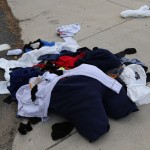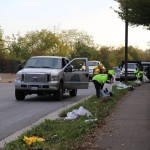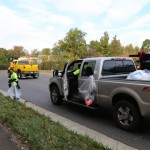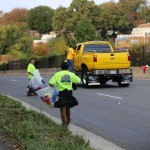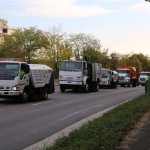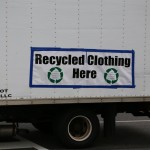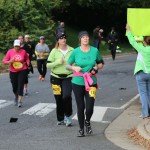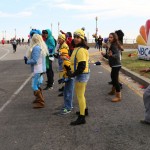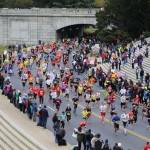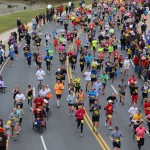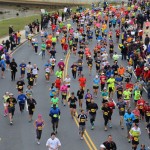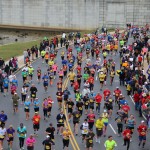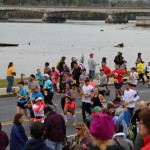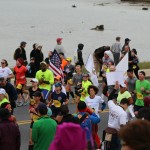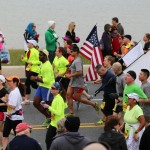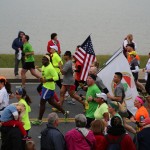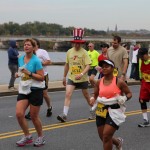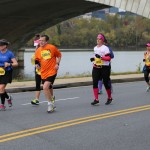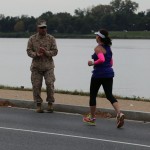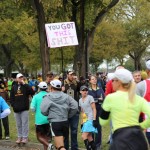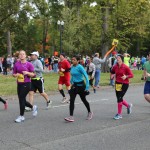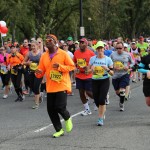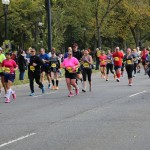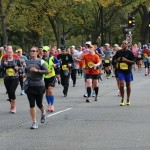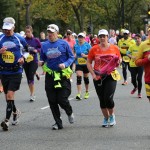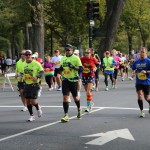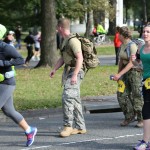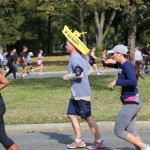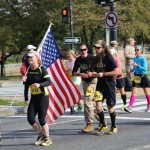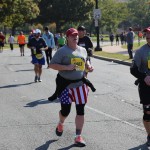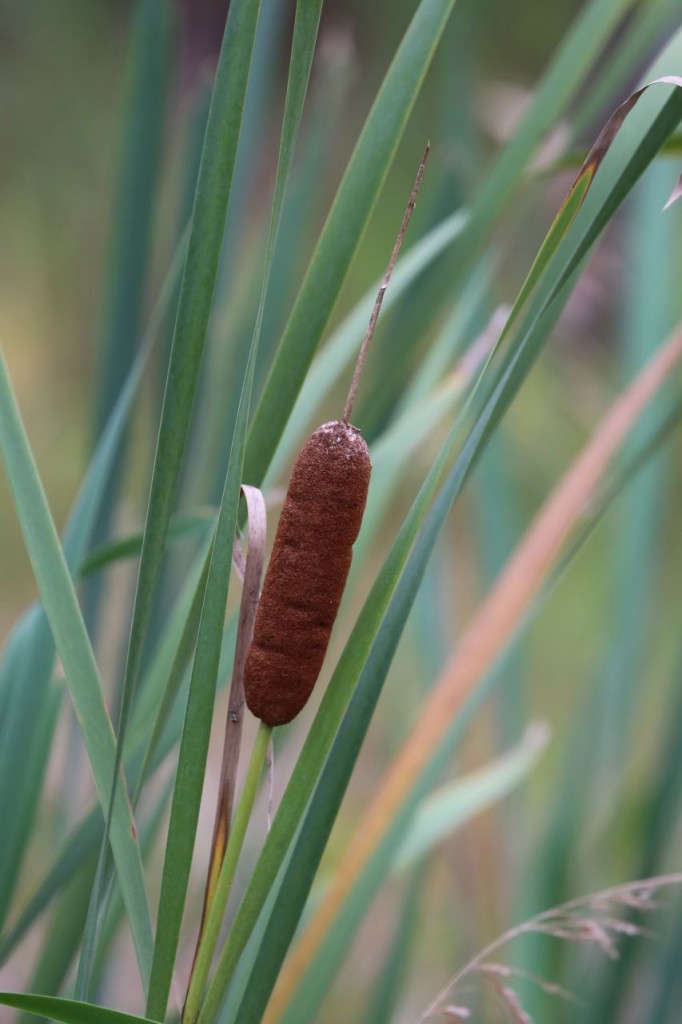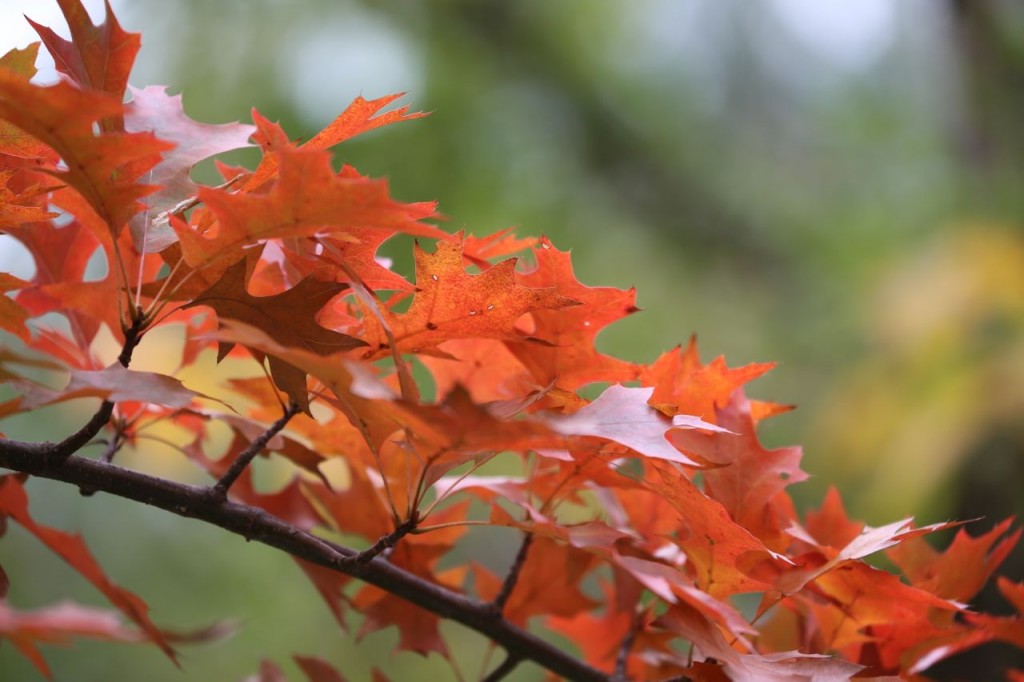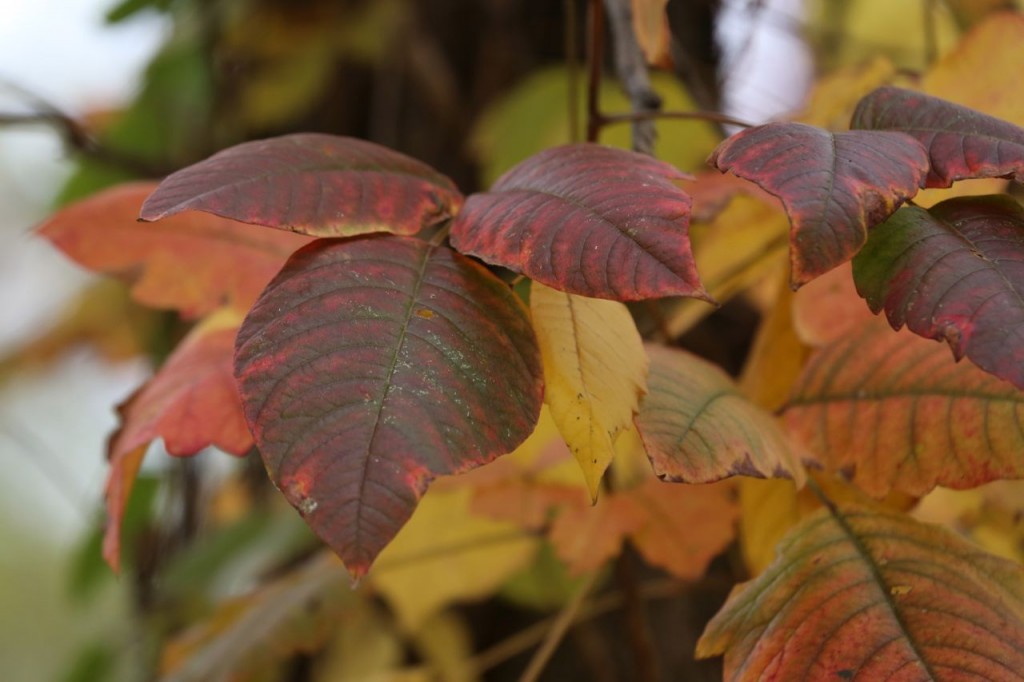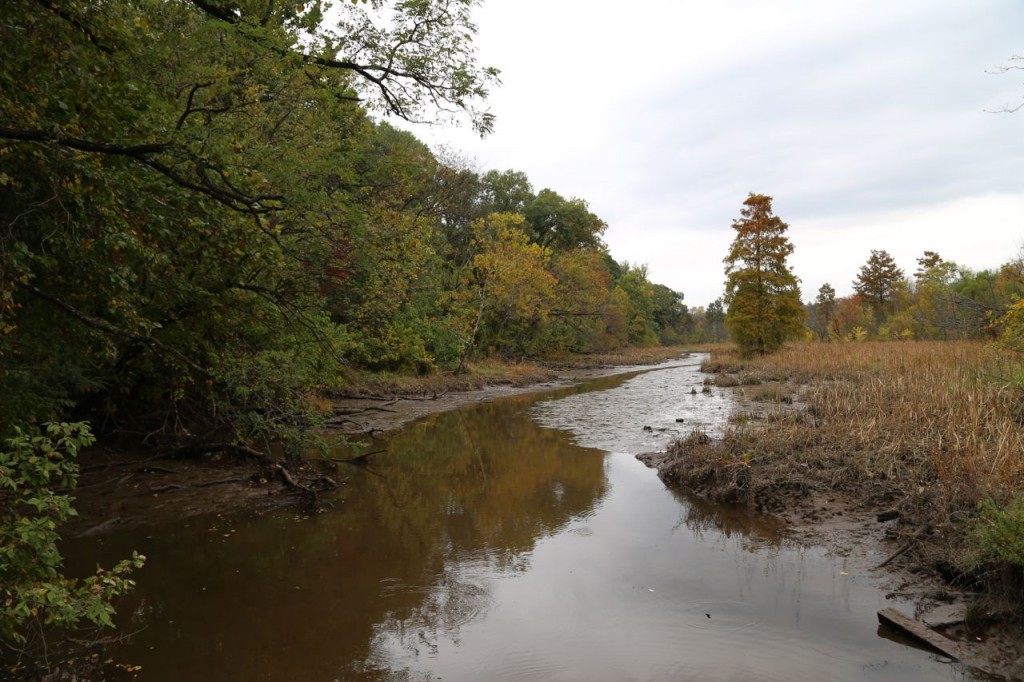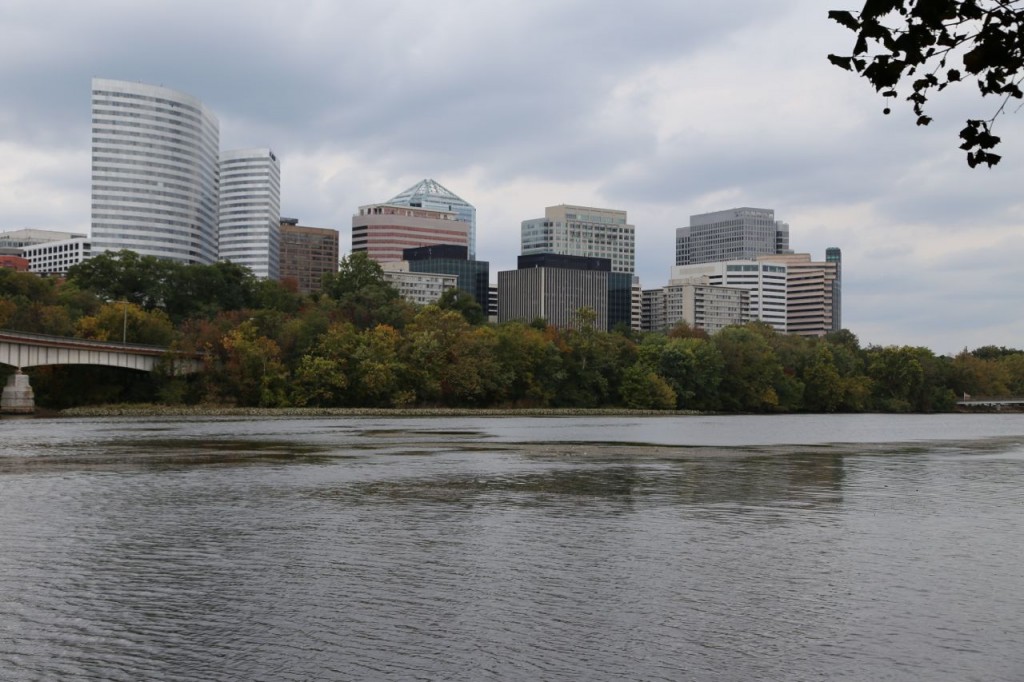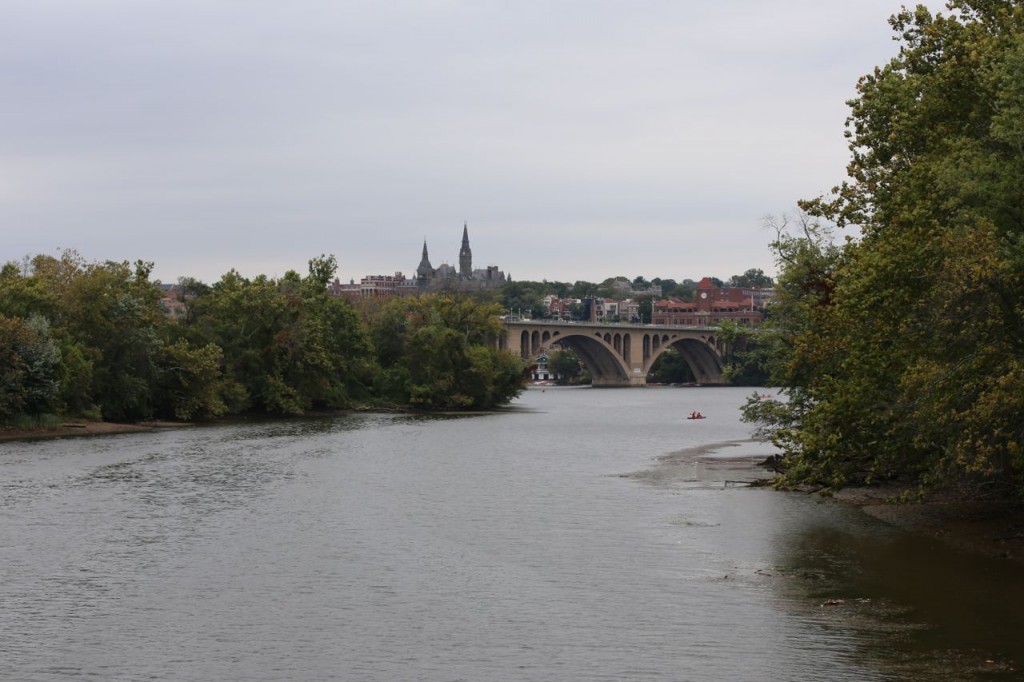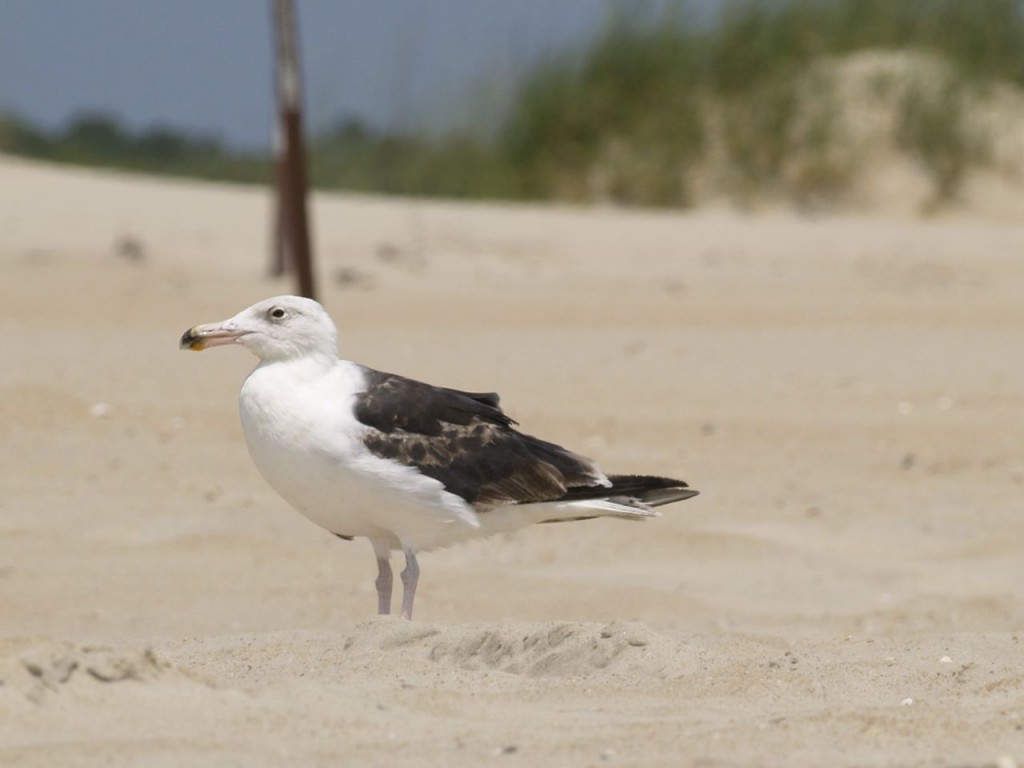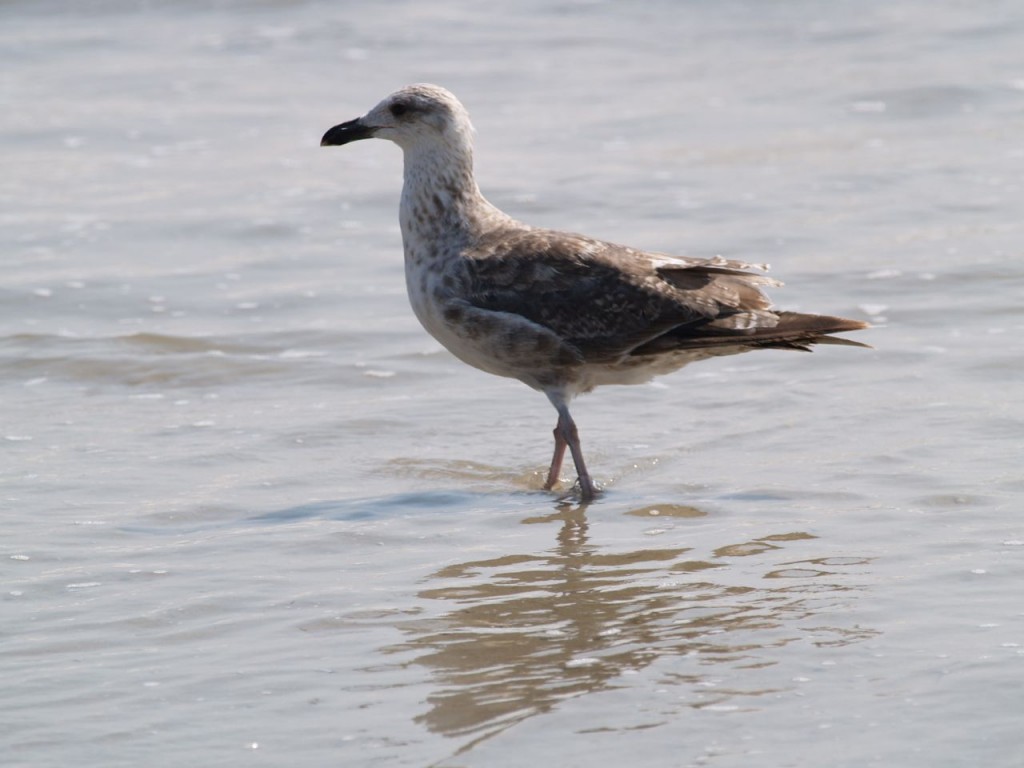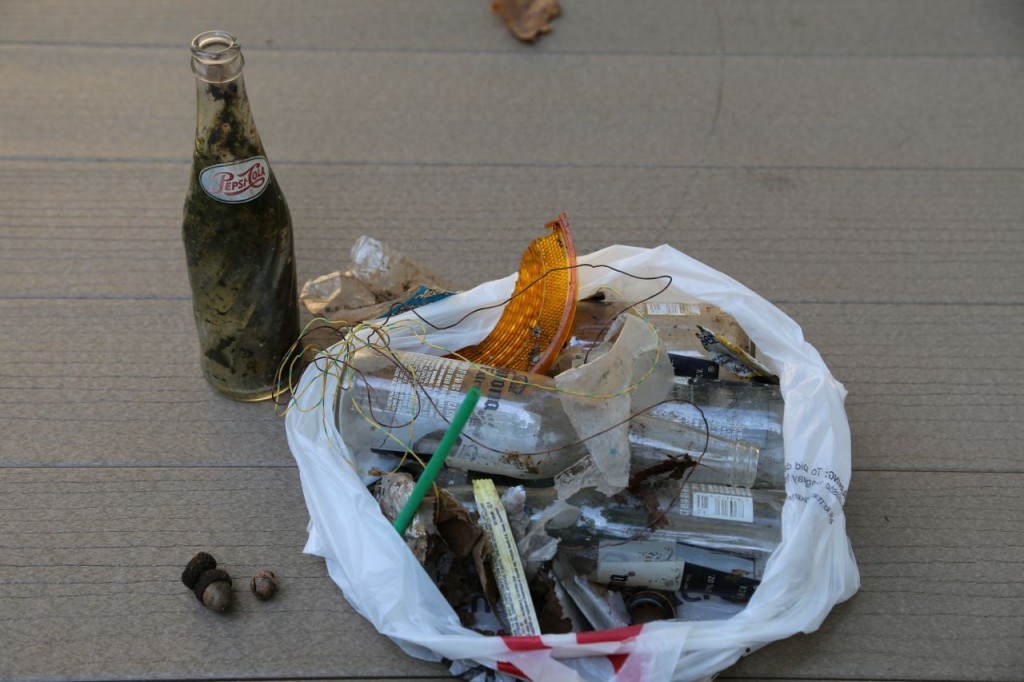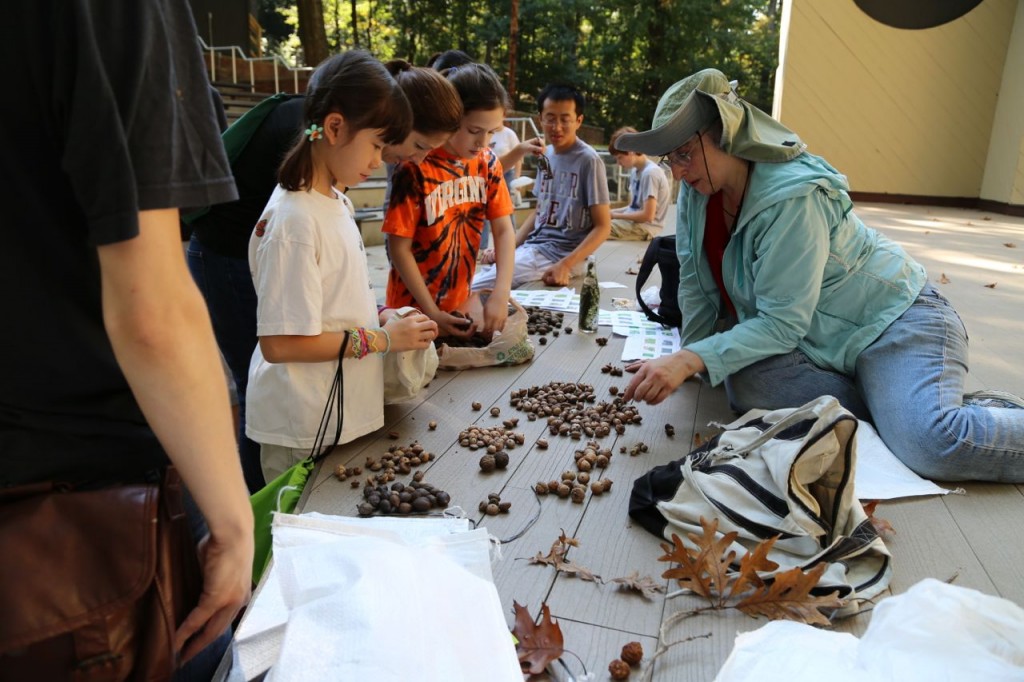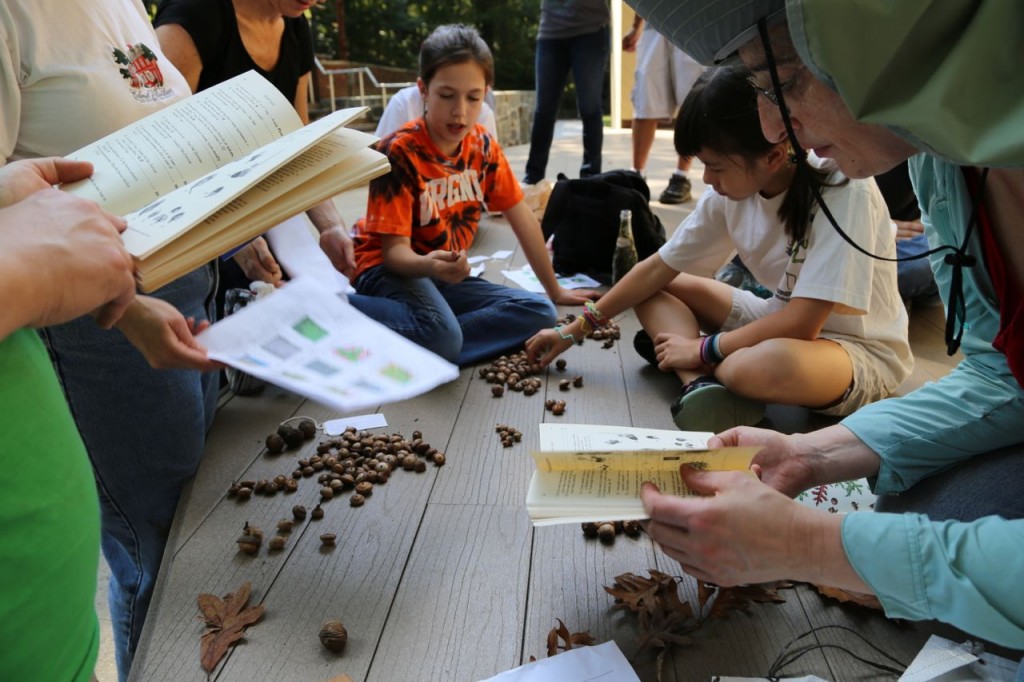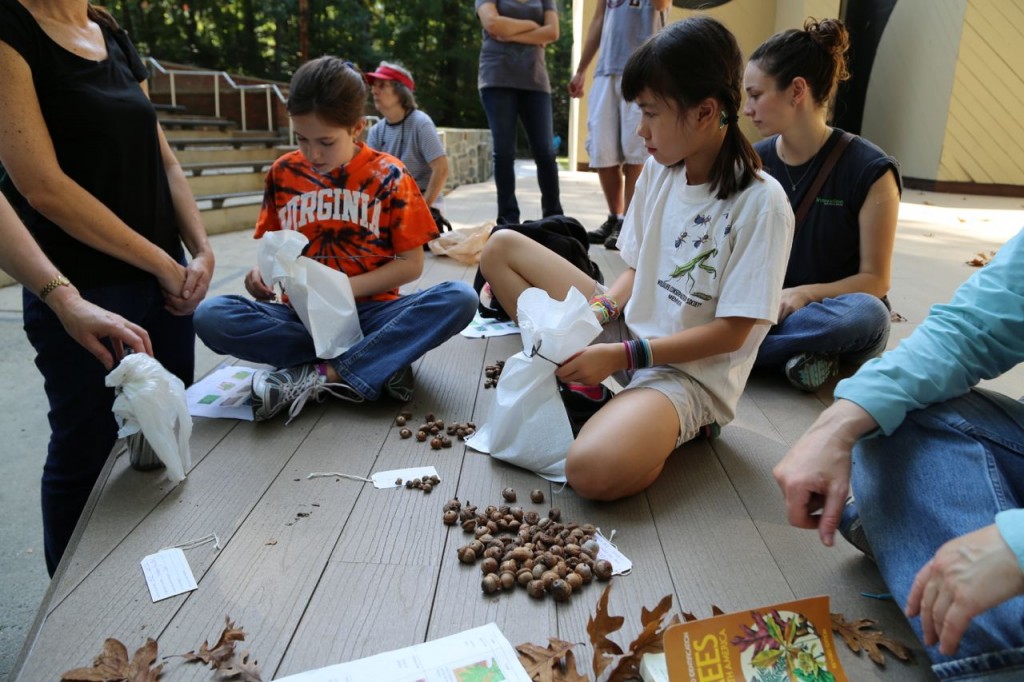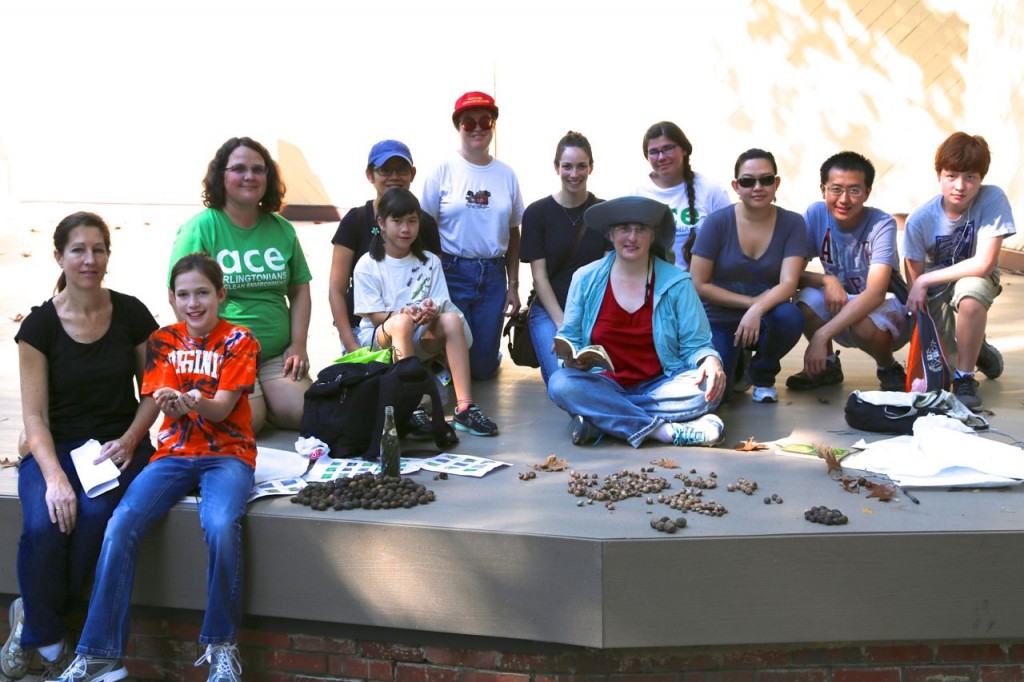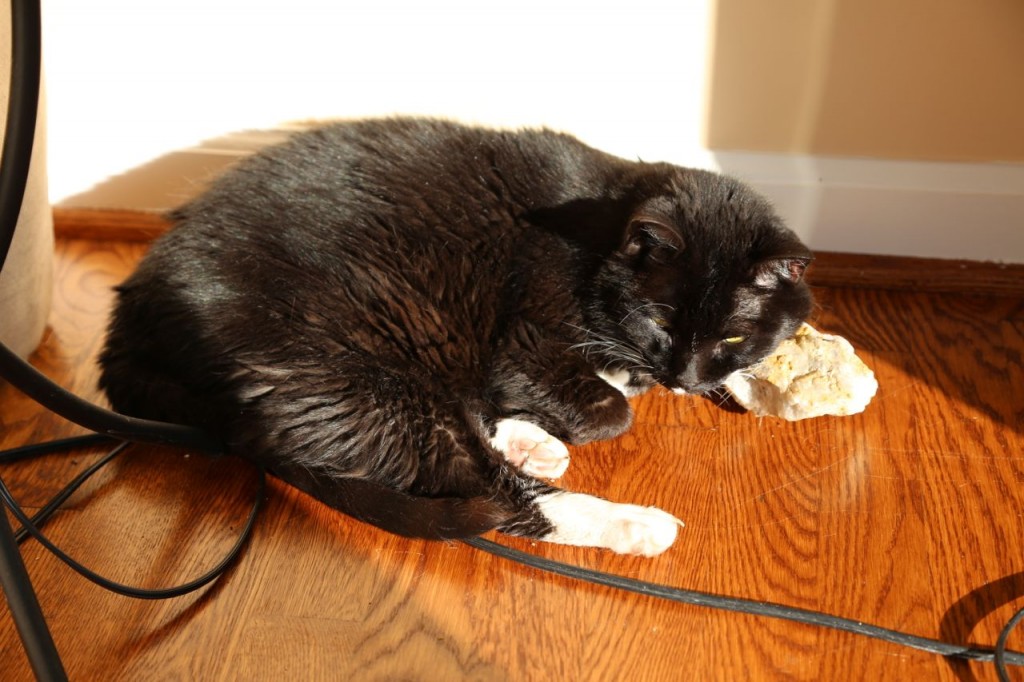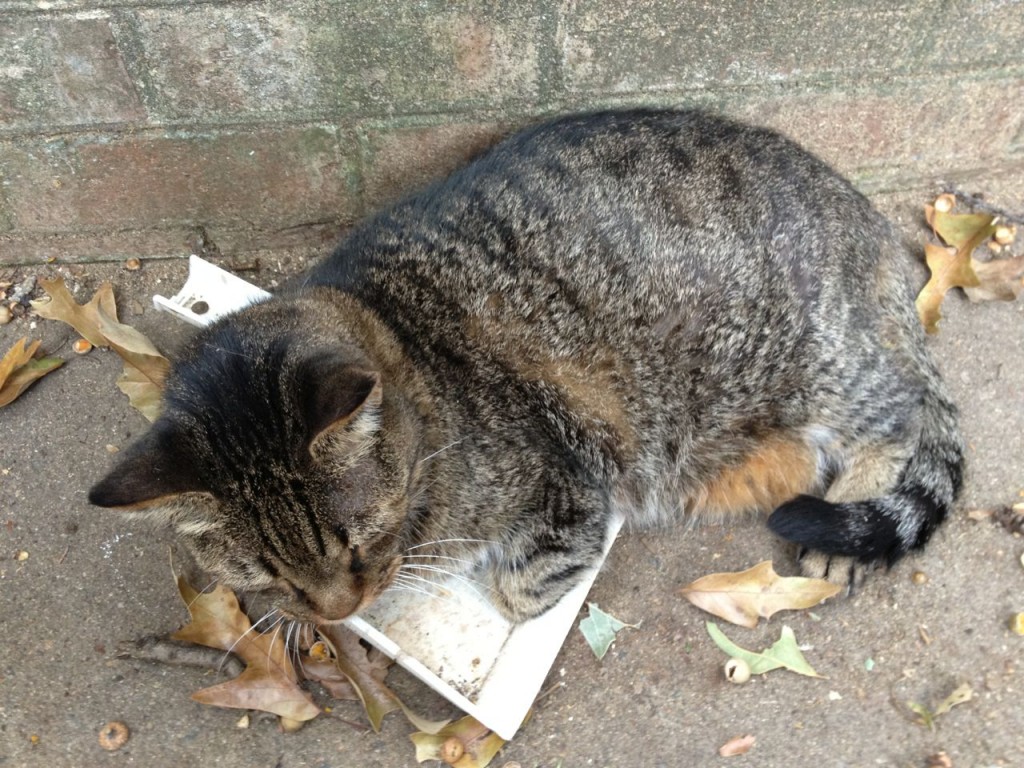Yesterday, I watched the Marine Corp Marathon from a couple of different spots and cheered on the runners. Absolutely everyone of them has my respect. They inspired me to increase my Sunday long run from eight to nine miles. There is no way I can run a marathon, or at least not yet, but they inspired me to up my game. Below are a few of my photos that I took. Some runners are dressed in costume. Some military members are dressed in military gear including backpack. Some carried flags. One guy jump roped. One guy ran while juggling three footballs and dressed as Robert Griffith III because evidently running is just not a challenge (check out his photo below, as the best part is the look on the face of female runner next to him). At the end of this post is all the photos that I took on the extremely off chance that someone who reads this blog post knows someone in or was in the marathon and I by chance got their photo. If so, leave me a comment, and I will be happy to send you a copy.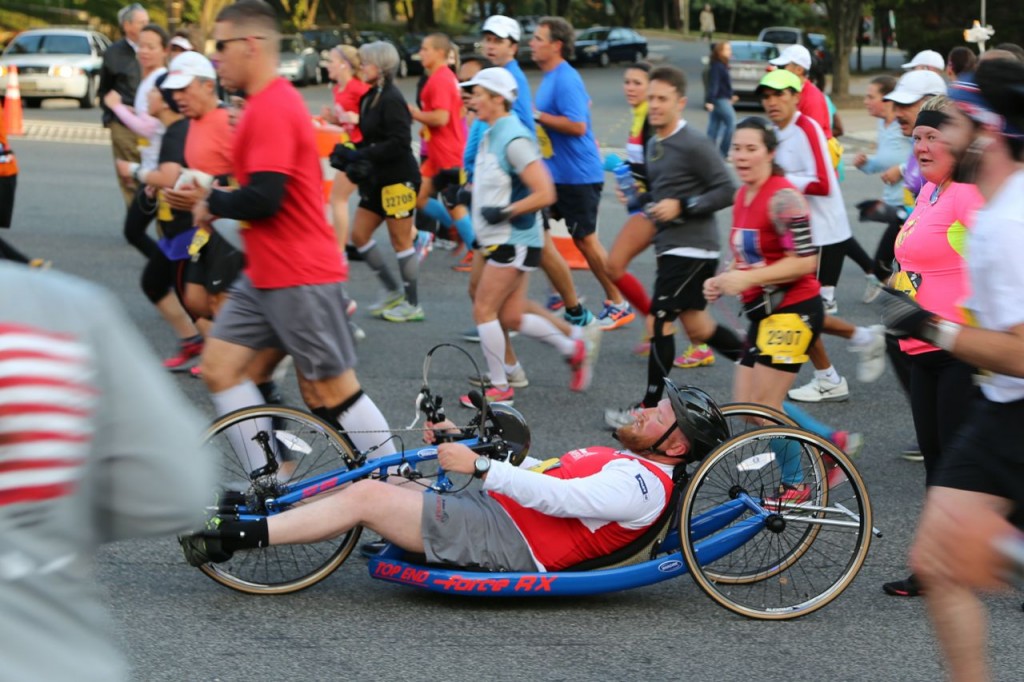
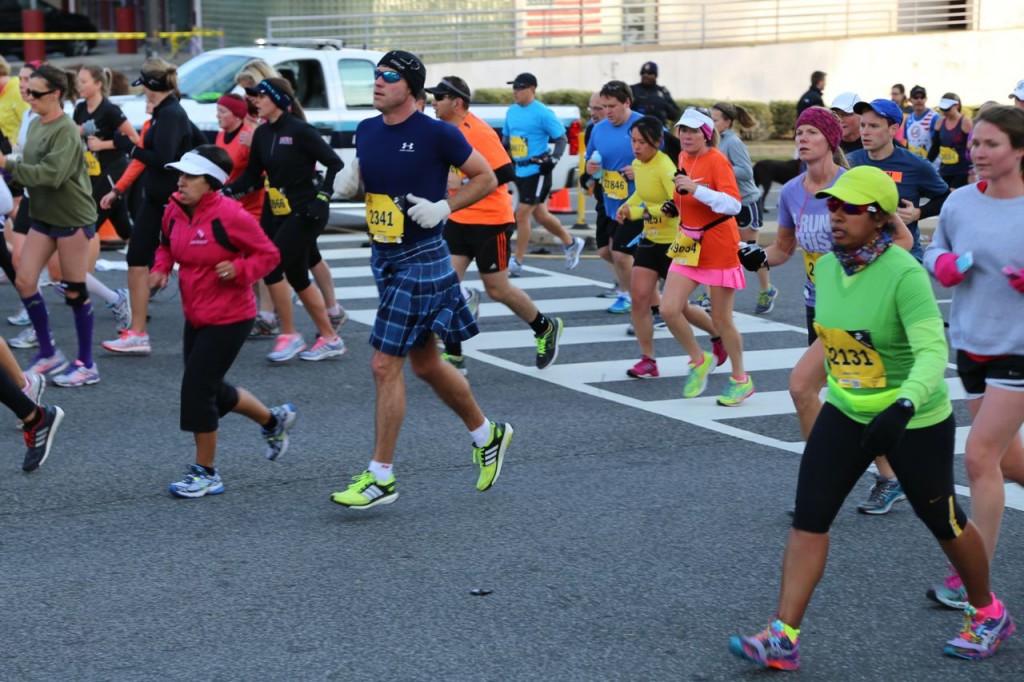
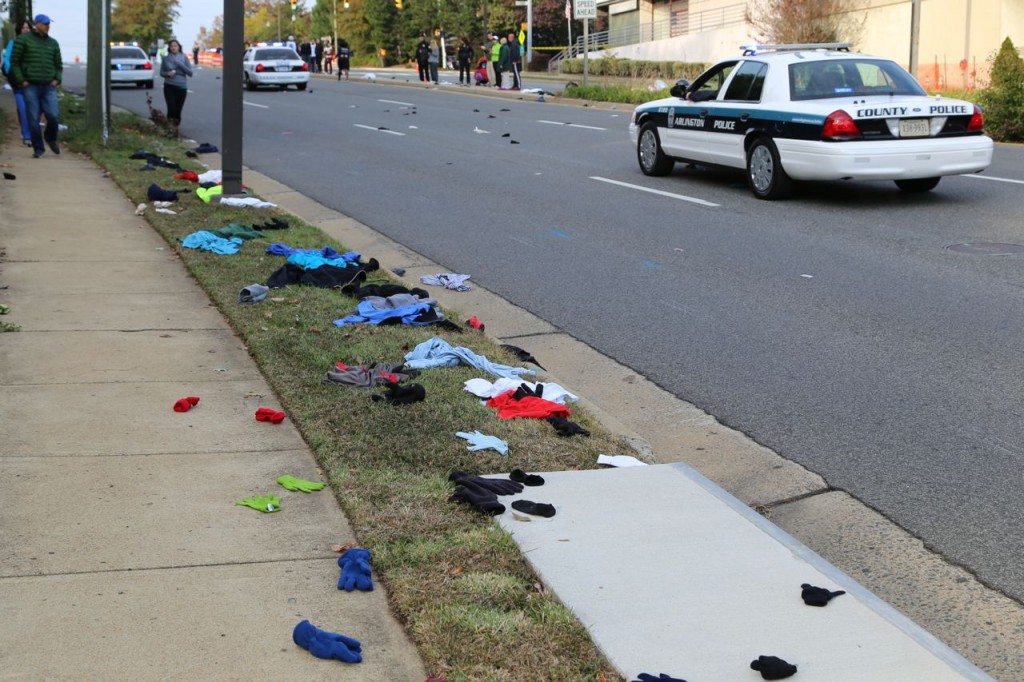
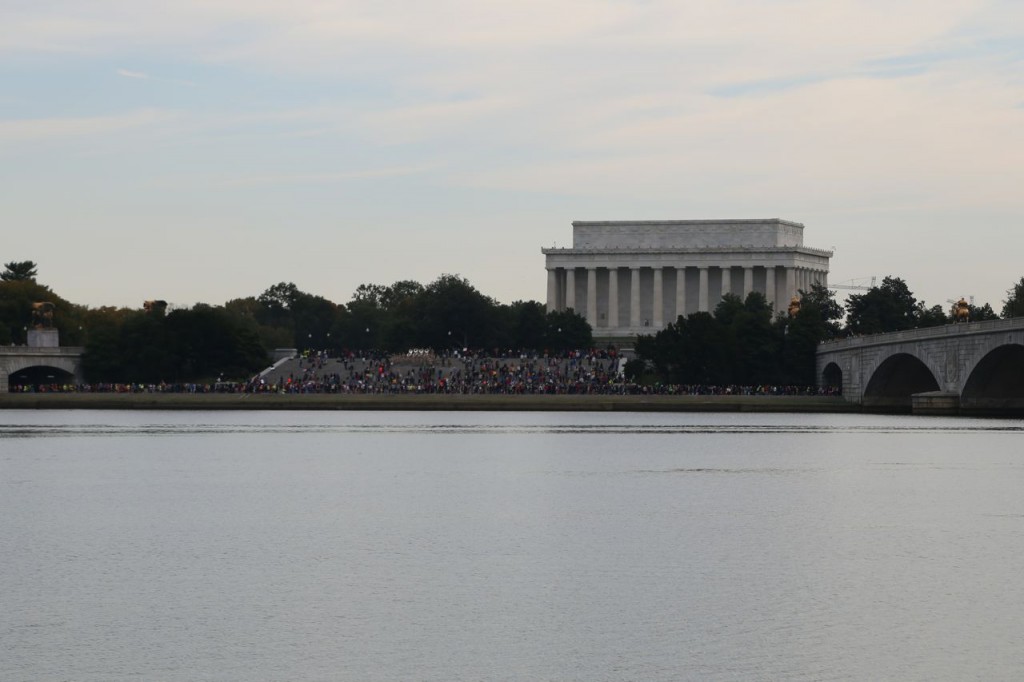
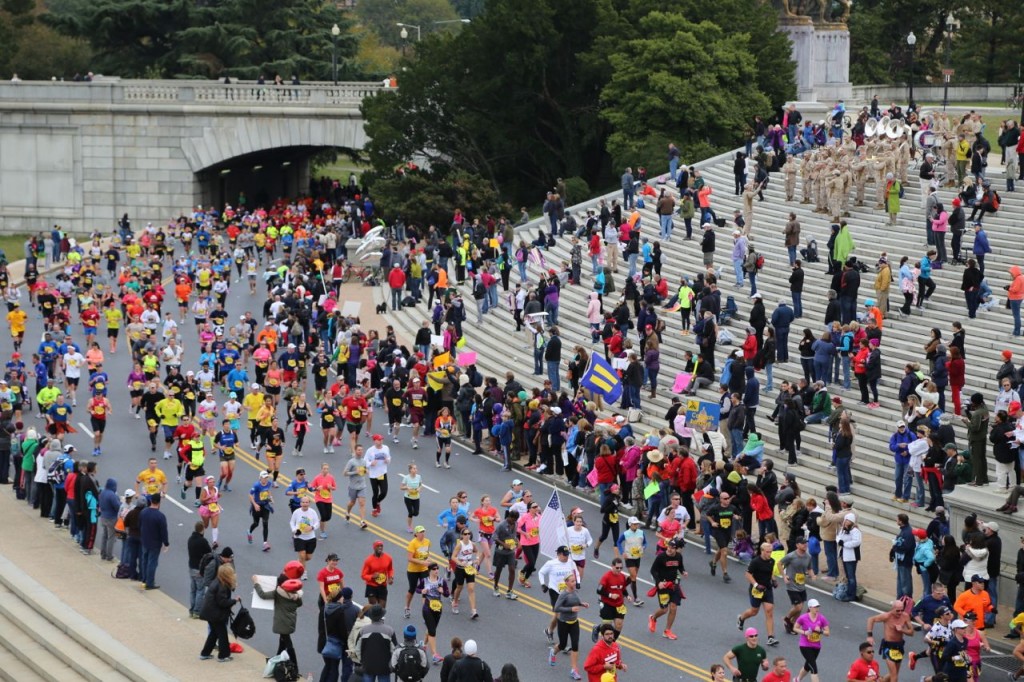
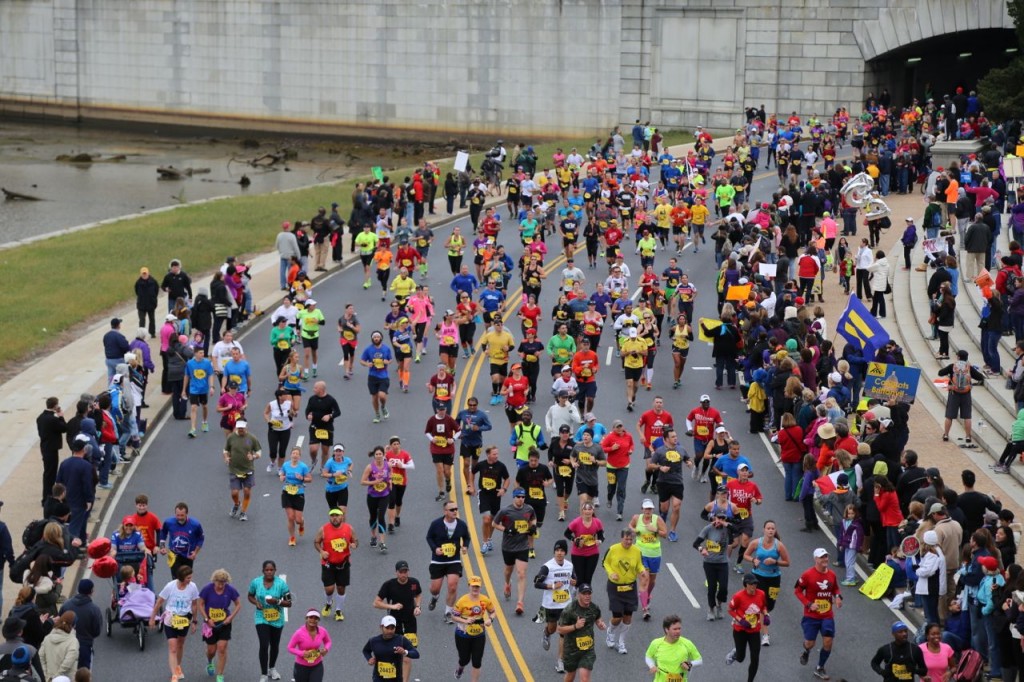
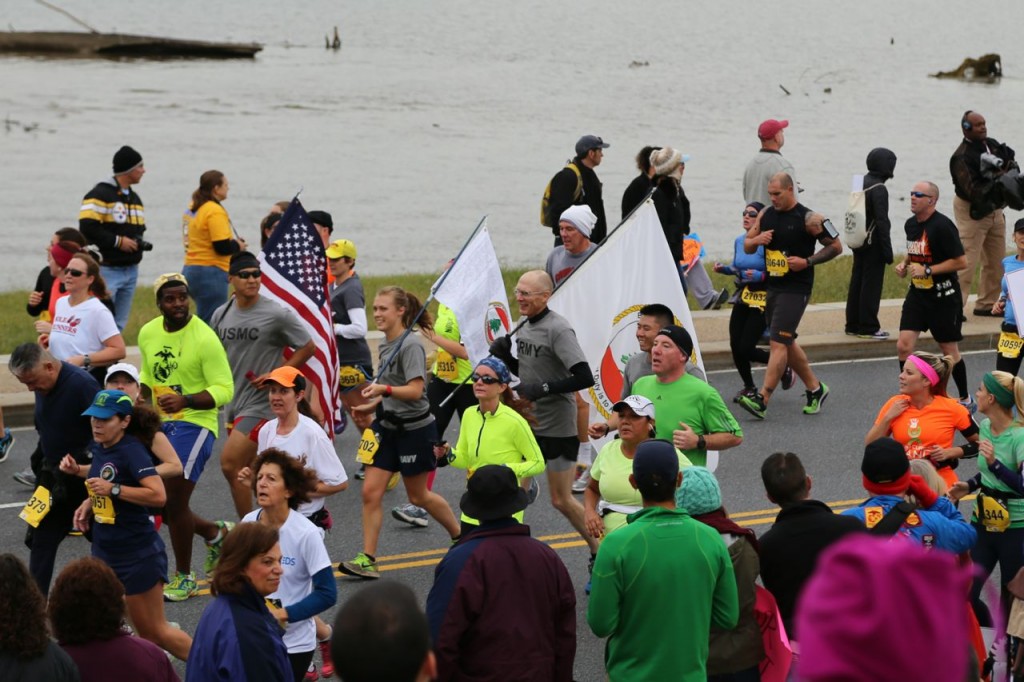
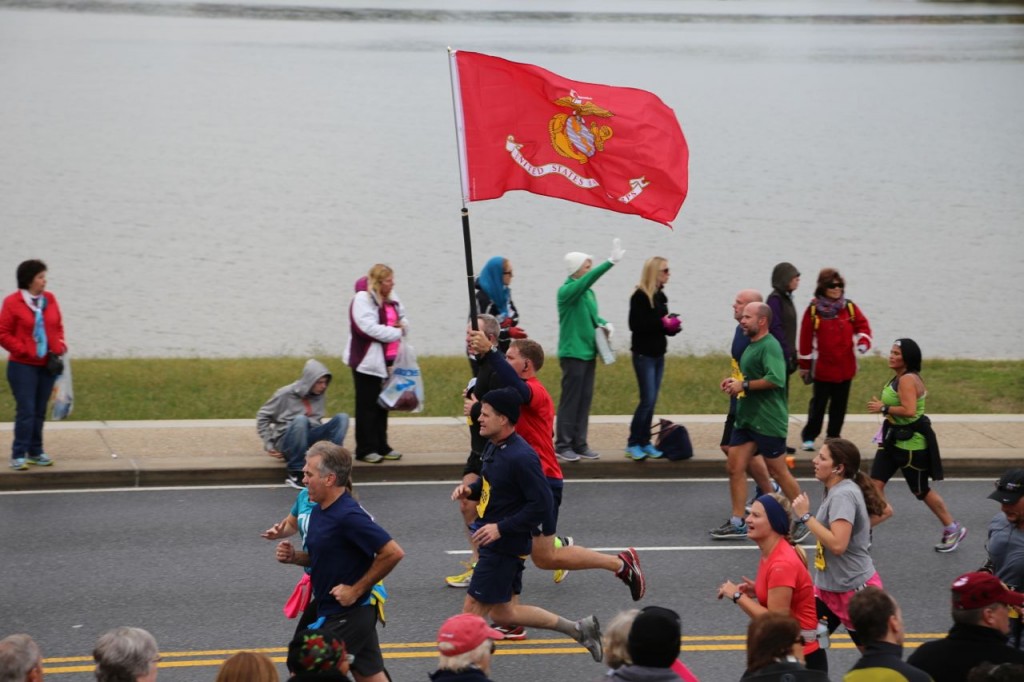
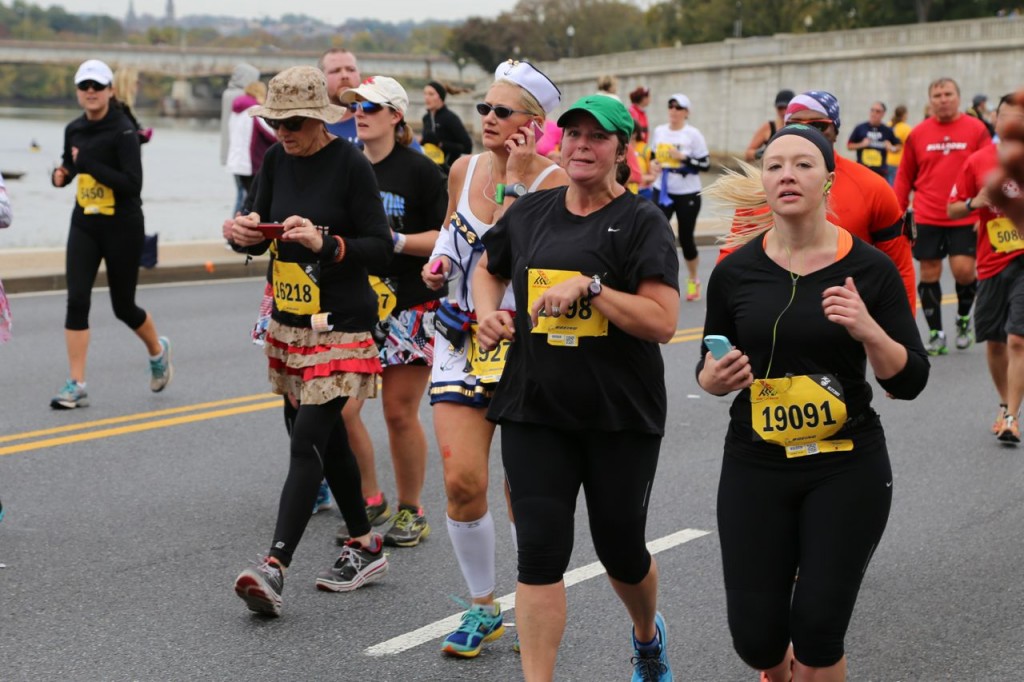
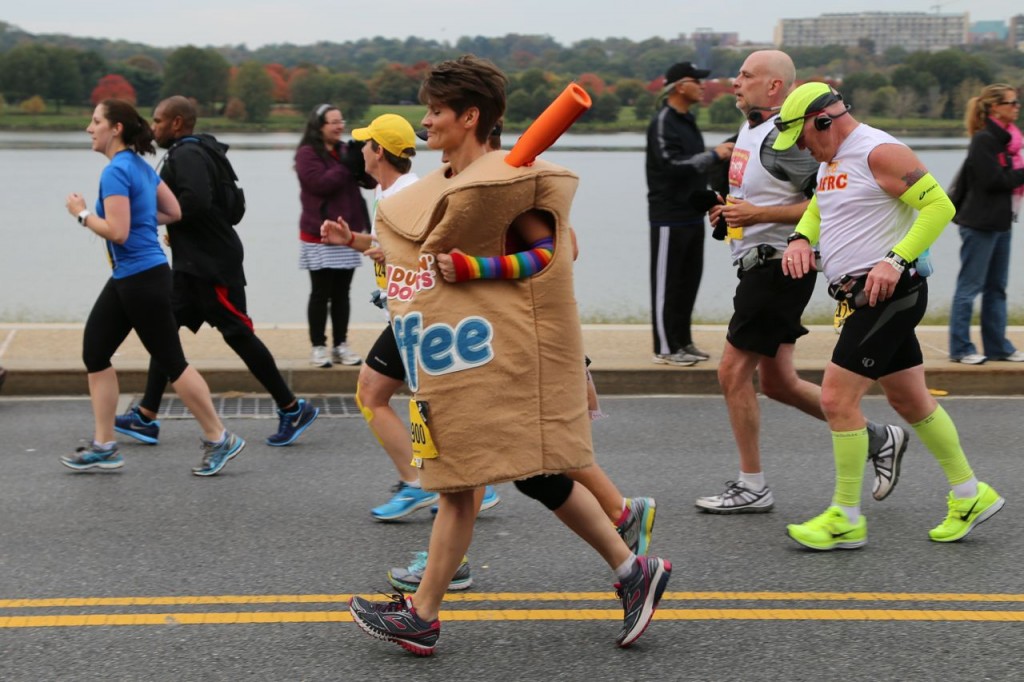
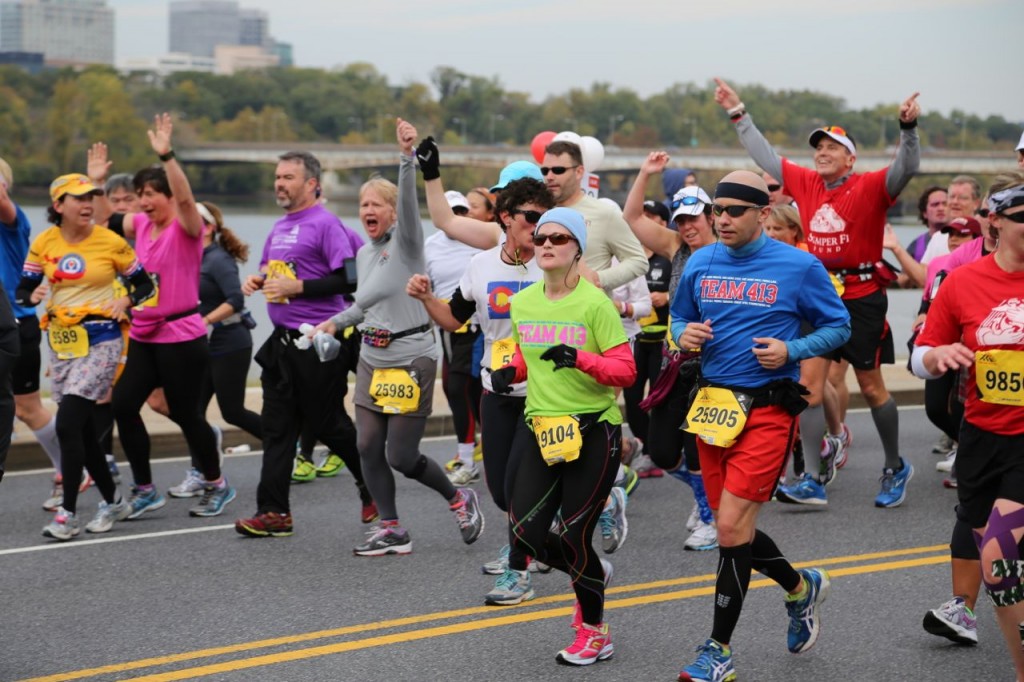
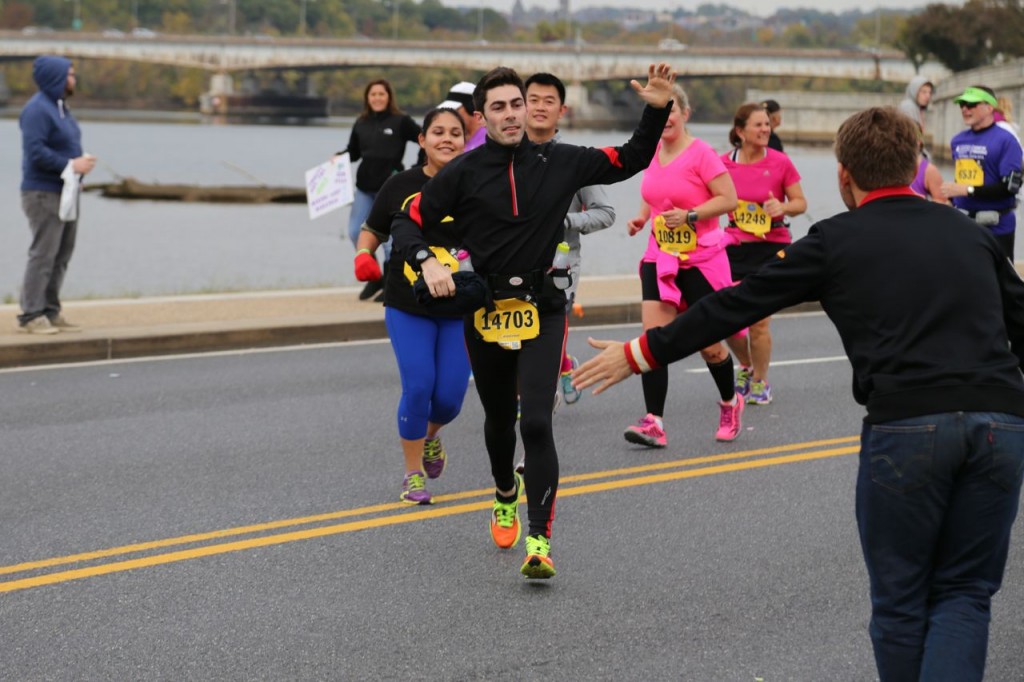
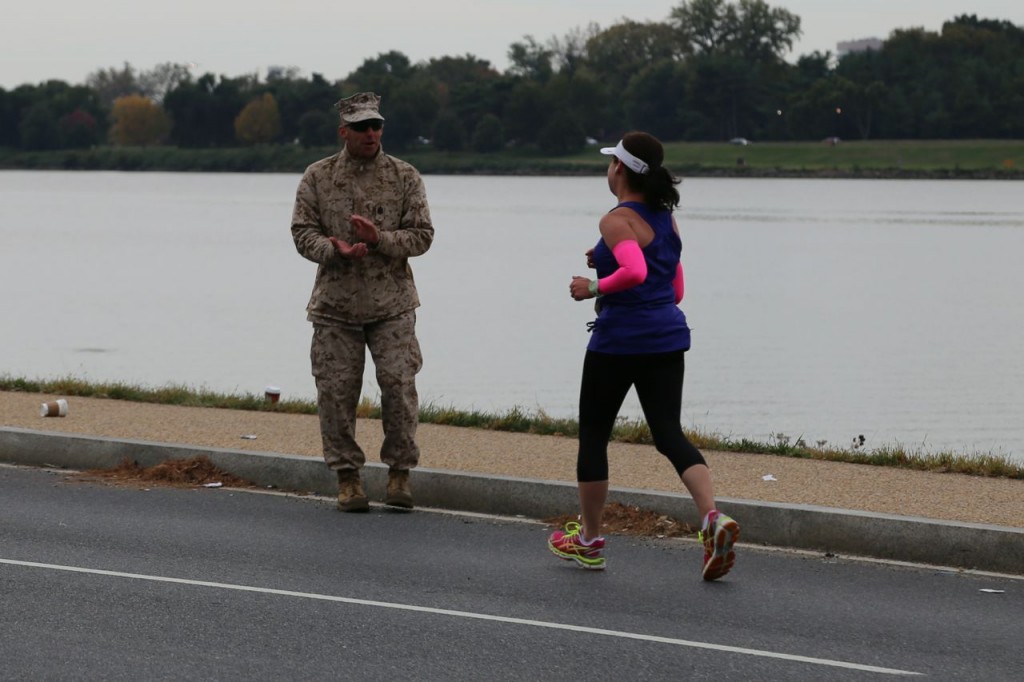
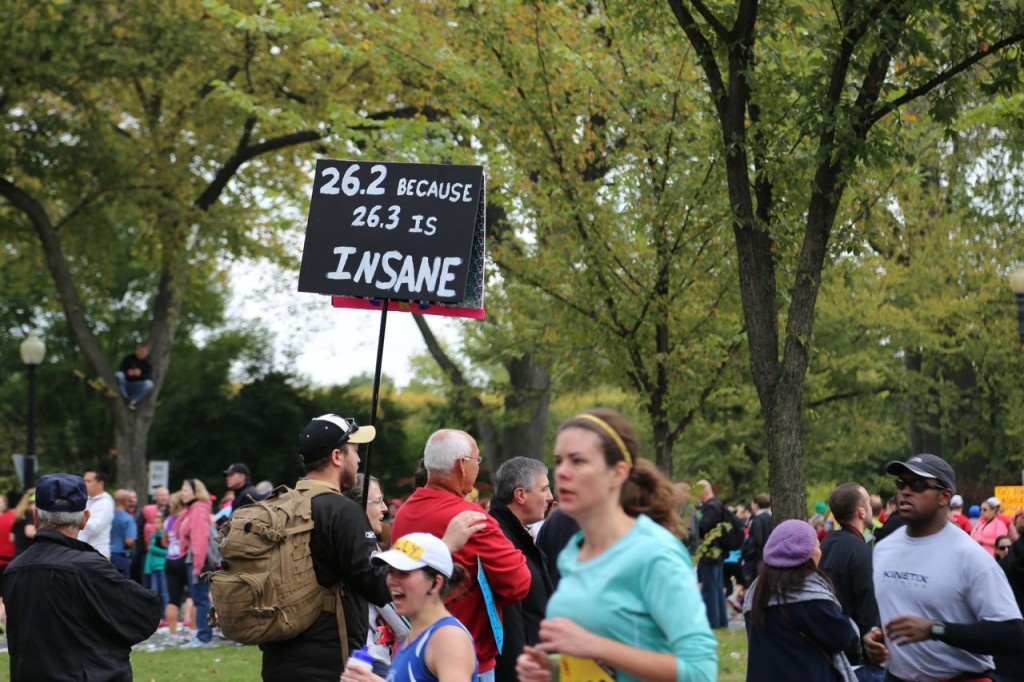
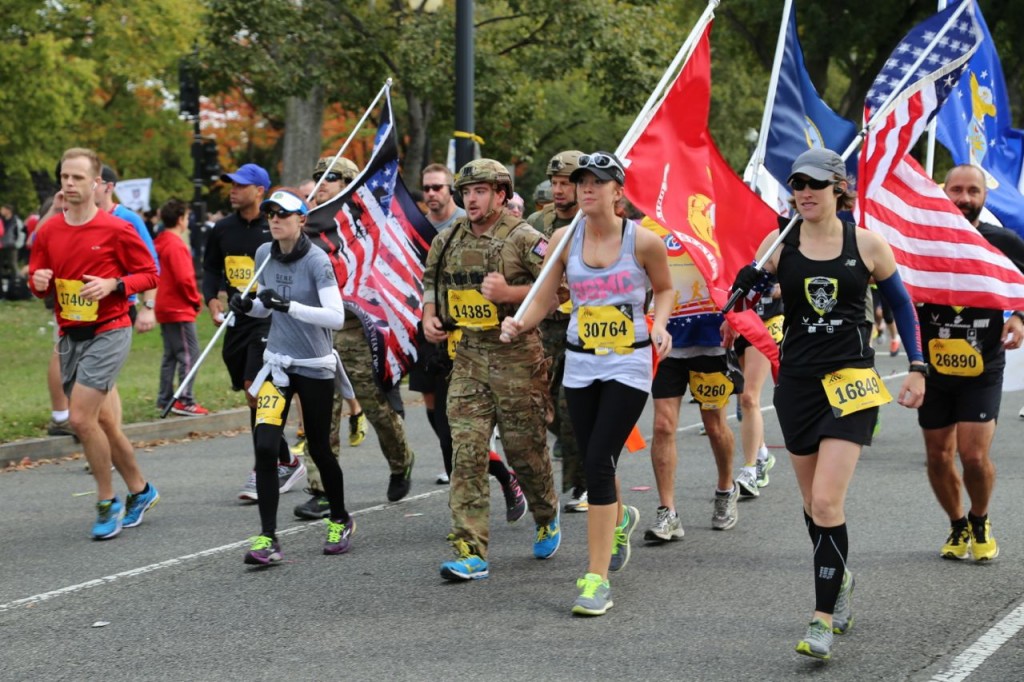
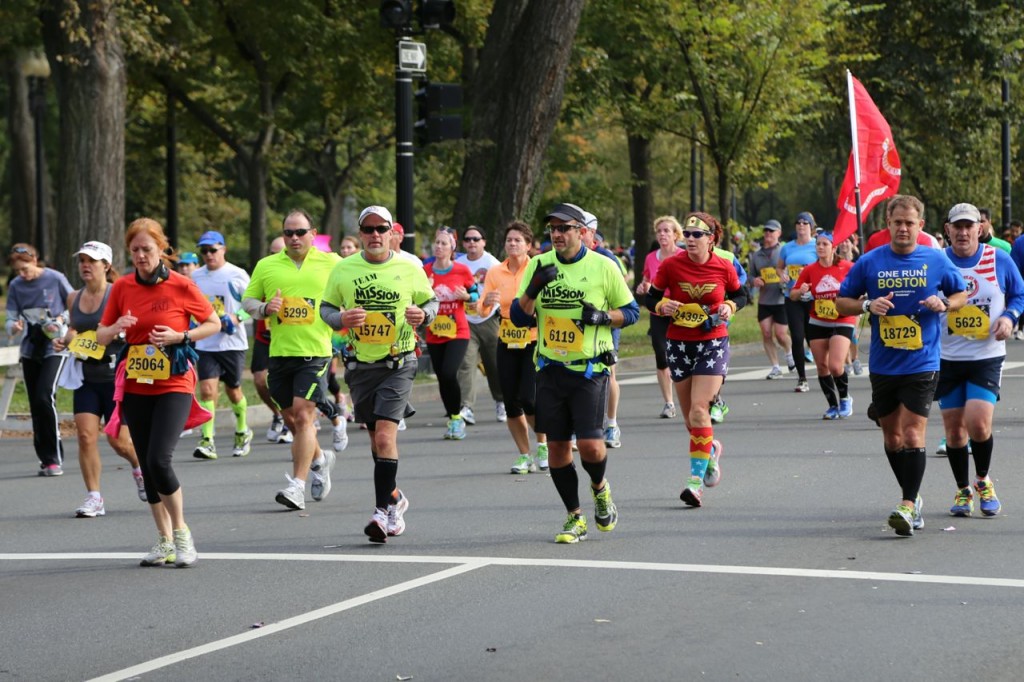
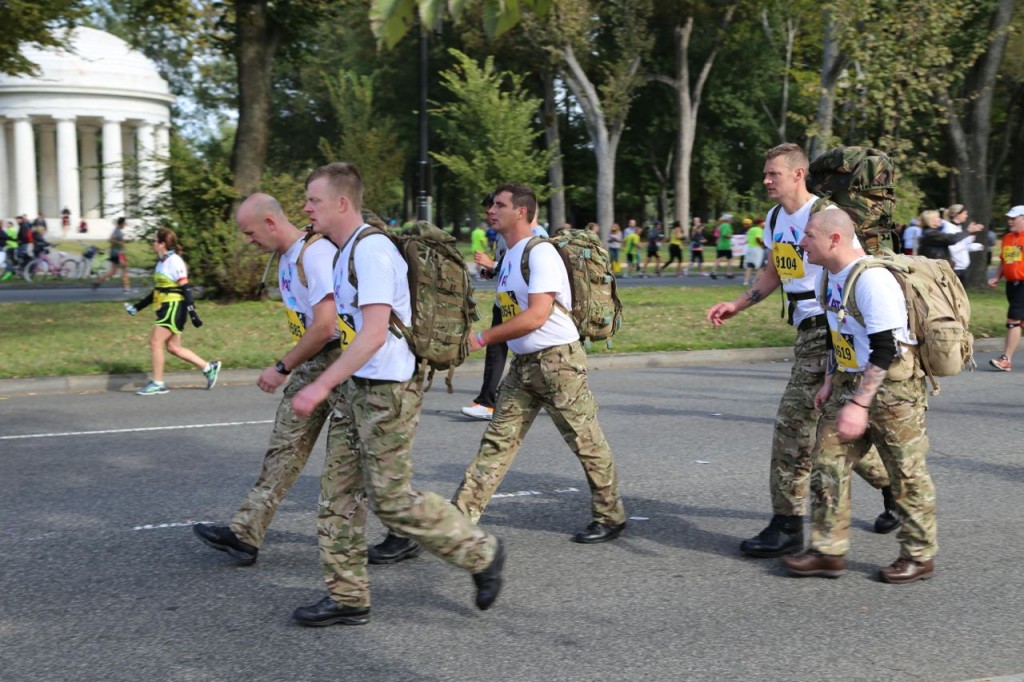
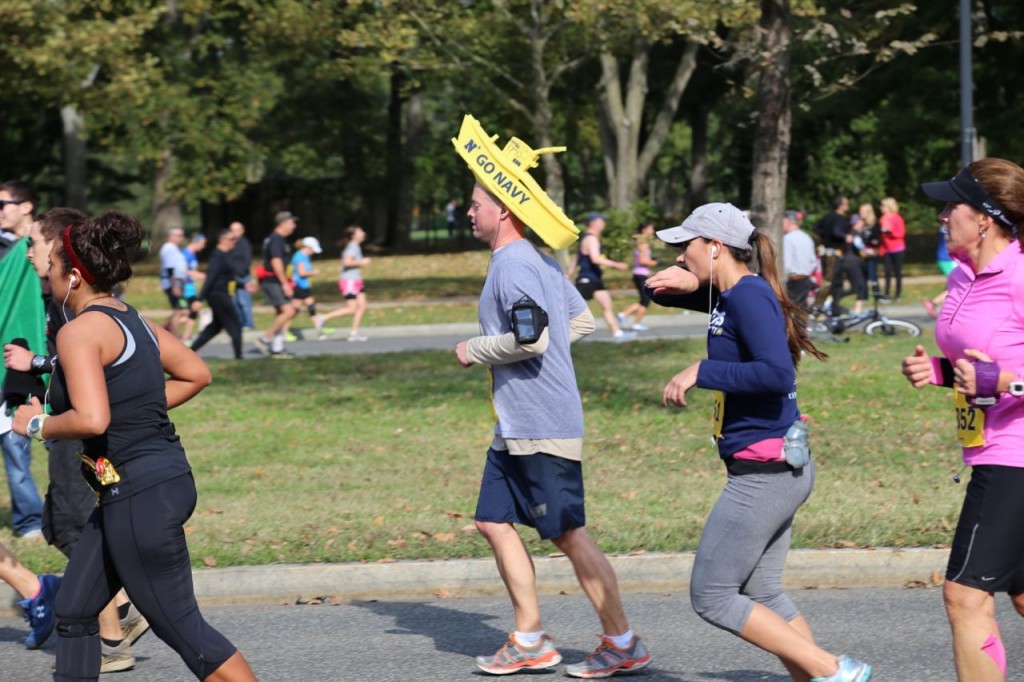

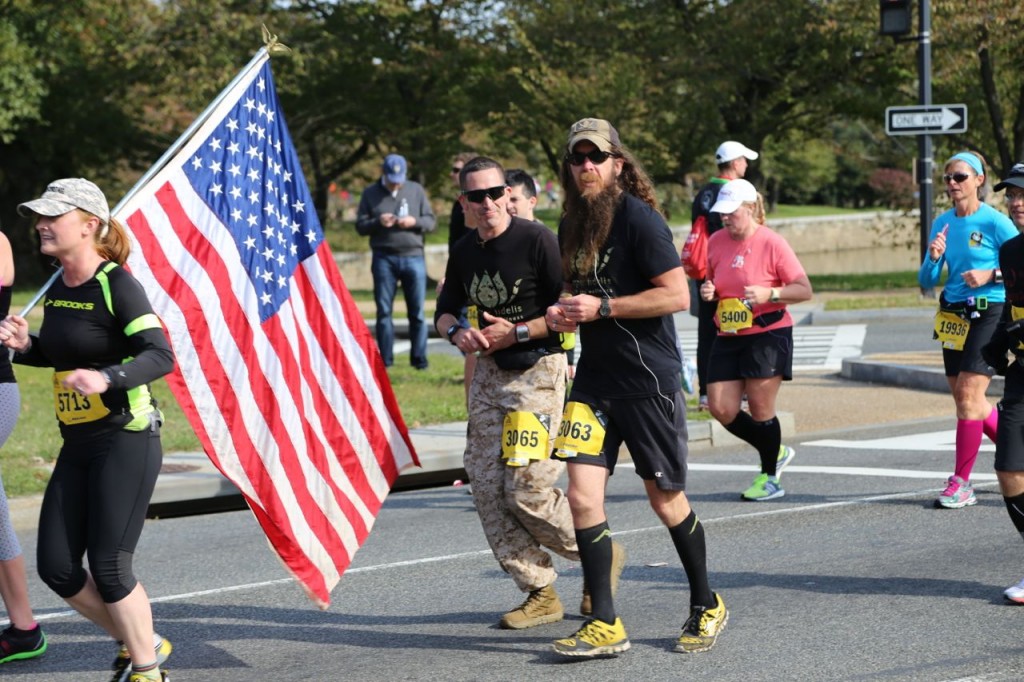
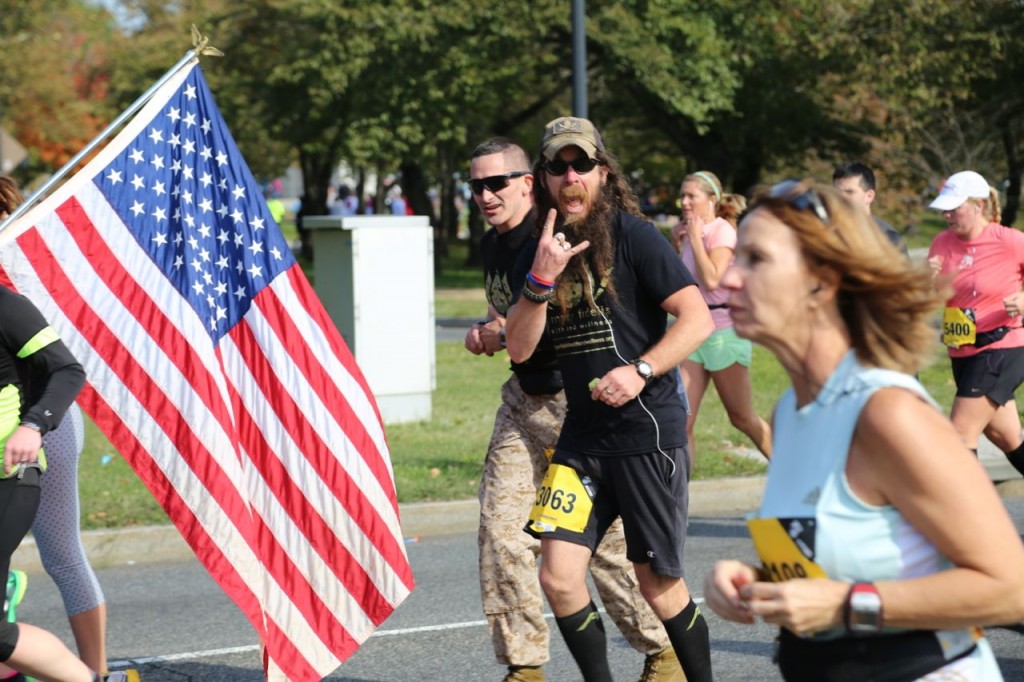
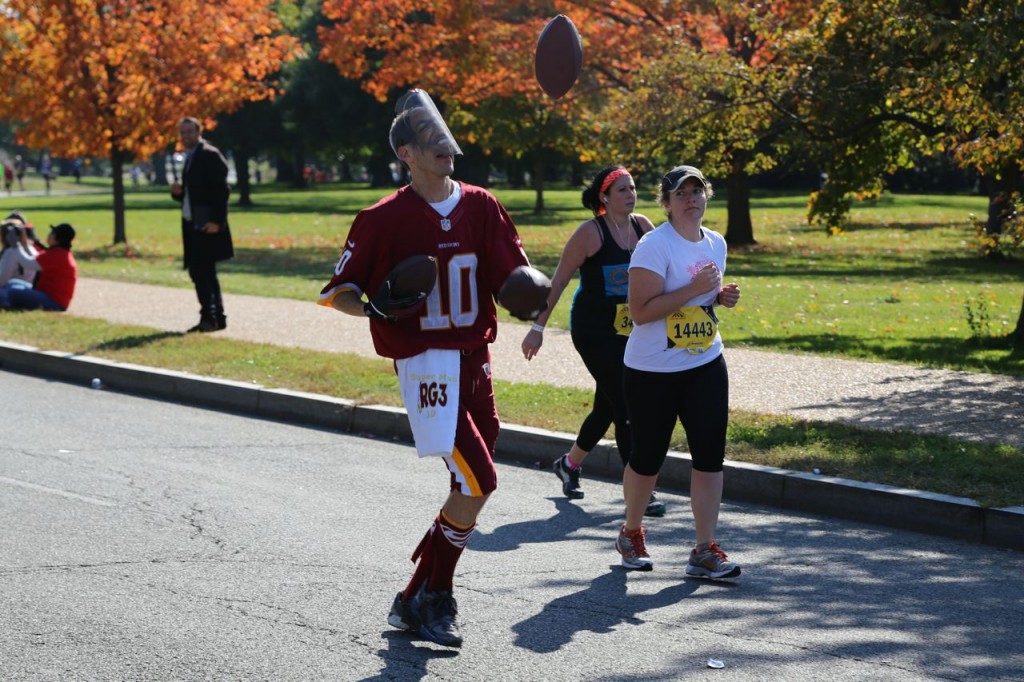

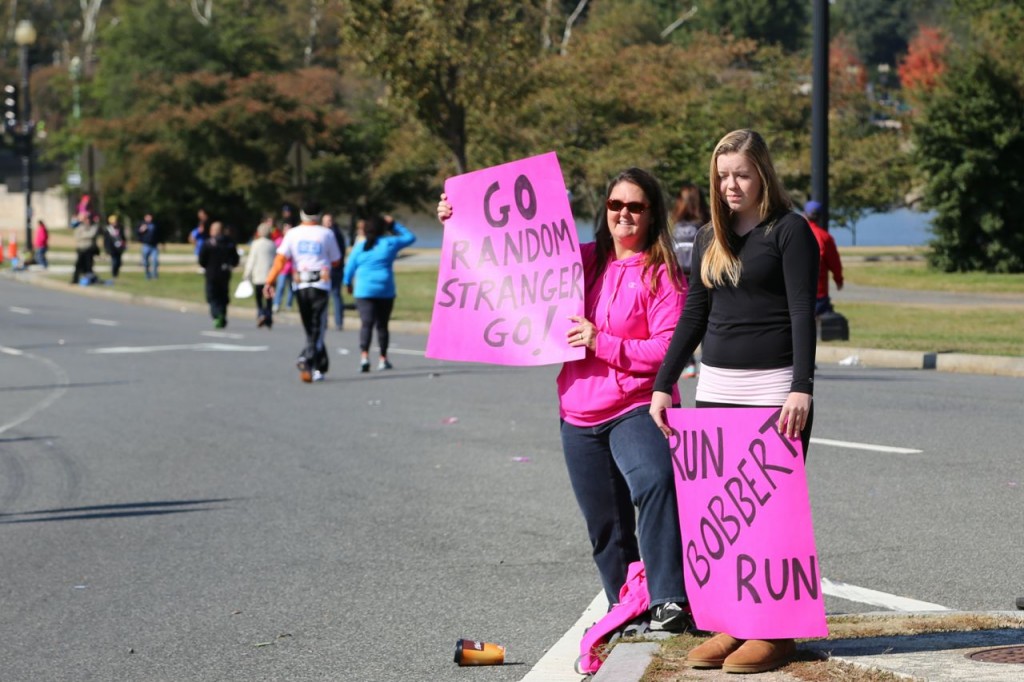
Month: October 2013
Theodore Roosevelt Island
I spent a little time on Theodore Roosevelt Island National Park today. It is a nice little park in the Potomac River. Visually, it is hard to believe that this wilderness area is right in between the congested areas of Washington, DC and the Rosslyn area of Arlington, VA. However, as it is in the flight path of National Airport, and I-66 actually runs over the southern section of the island, you can hear how close you are to the urban areas. It is still a nice area, and as fall has come, many of the leaves were starting to show beautiful color. It also has lovely views of Arlington and the surrounding bridges over the Potomac. Also, I finally got some good photographs of double-crested cormorants.
#StandingwithDNLee
I’m privileged. I know I am. I have been my whole life. I’m a white woman who grew up in middle class suburbia. I went to good public schools through high school, and I went to very good public colleges and universities for my Bachelor’s, Master’s, and Doctorate. I grew up in the South, which I know many associate with racism, but I went to school with plenty of minorities. My one and only “disadvantage” is that I am female, in particular a female engineer and scientist. I do not consider being female a disadvantage, but females tend to get discriminated against as if we are less then males somehow.
This morning much of my Twitter timeline was filled with fellow scientists and then many other people getting very mad at Scientific American over its treatment of one of its bloggers, Dr. Danielle N. Lee. I encourage anyone who reads this post first to go read Isis the Scientist’s blog post about what happened to Dr. Lee, which includes Dr. Lee’s original post. The original post was on Scientific American but now is no longer there, which you can read about in Isis the Scientist’s follow up post. The extremely short version of all this is that an editor a scientific blogging website asked Dr. Lee to write some articles for free and Dr. Lee said no, the editor called her a whore. [Seriously, go read Isis’s blog posts.] My first thought upon reading about all this was, so you think calling a woman a whore is the way to persuade her to do what you want? Really? Does that work for you normally?
Somewhere is the incredulous, anger, and sympathy and respect for Dr. Lee upon learning all the details of these events, I thought how lucky I am. I spent the better part of my childhood in Texas, which has more than its share of racist, sexist pigs, yet I can’t actually remember a time I truly had to deal with one on a personal basis. Last year, I wrote about how lonely it can be to be a female engineer, both in school and in the workplace. I’ve been surrounded by men in the classroom and workplace, since pretty much my freshman year of college. Truthfully though, with one glaring exception, all the men I’ve studied or worked with have for the most part treated me as an equal. Maybe they didn’t, and I was just too oblivious to notice.
The one glaring exception was at the company where I had my first full time job after finishing my Bachelor’s and Master’s degrees. My manager, a senior engineer, would occasionally make some remarks that made 26-year-old me rather uncomfortable, but I didn’t think were truly sexual harassment, and it has been so long ago, I don’t even remember what they were. Then shortly before my birthday, the other female engineer in the office and the female secretary happen to be in the copy room with him when upon the female engineer exclaiming “oh, it’s [GGE]’s birthday next week,” he said, “does that mean we get to spank her?” I was not in the room at the time, but this was a tiny office of about nine people. There are no secrets in an office that small, and I was good friends with the secretary. I heard about this comment pretty quick. To say this comment made me uncomfortable would be putting it mildly. I went to one of the other senior engineers, who happen to have previously been my manager, and I told him what was going on. I told him I didn’t want to make a big deal out of any of it, but I really wanted the comments to stop both for my and every other female’s sake. He assured me he understand, thanked me for coming to him, and promised to take care of it. Within a week or so, a human resources person from the company’s corporate office was in the office, and everyone was taking mandatory sexual harassment training. My former manager had my back. He took care of it, or really he made sure the company took care of it. Whether this engineering company that was definitely dominated by men took care of it because they seriously won’t take this kind of behavior, or if they were more motivated by fear of a sexual harassment lawsuit, I don’t know. What mattered was, they took me seriously, and they reacted exactly the way they should have.
So to return to Dr. Lee, I was thinking how lucky I have been to only have had one bad experience in my personal and professional life. Scientific American seems to not have her back, and the one time I had a problem, my company had my back. Then I stopped to think, why am I lucky to have only had to deal with one sexist idiot in my career? Why should a woman have to be lucky to not be called a whore? Why should I consider myself lucky for be treated like an equal in school and work? Why should I consider myself lucky for people respecting the career decisions I have made and for whom I would and wouldn’t work? Perhaps that is why I am a feminist because I am confident in the notion that I AM AN EQUAL. I have respect for myself. Calling me names will not induce me to do what you want. I will respect you if you respect me. Isn’t that what we learned in Kindergarten? Treat others the way you want to be treated? As for Scientific American, I cannot understand why they took down her post. I cannot understand why they are not supporting her. Their explanation makes no sense, especially to a regular reader of their blogs. They failed Dr. Lee, and they failed their readers by not supporting her. Their silence on her being called a very ugly name is deafening. People and companies who do not stand up against racism and sexism only allow it to continue. Until Scientific American apologizes publicly to Dr. Lee, I will be boycotting them. I am sure not going to go anywhere near the blog website whose editor called Dr. Lee a whore. I wish I could do more. I wish racism and sexism would end, but until they do, I intend to stand up for myself and anyone else who face them.
Book Review: “Conquering Gotham”
This isn’t really a proper book review but really more of a book recommendation. I’m not a writer or literary critic. I’m just an engineer who just finished reading a book about the history of one the greatest engineering feats in the early twentieth century and want others to know how interesting a book it is. The book is “Conquering Gotham: A gilded age epic: The construction of Penn Station and its tunnels” by Jill Jonnes (Penguin Group, 2007).
The book chronicles some of the history of various people and companies who tried to link Manhattan Island and New Jersey via bridge or tunnel. When the book starts, the Brooklyn Bridge, which was an engineering feat in itself, has been built, but the only railroad connection to Manhattan Island was via New York Central and its bridge over the Harlem River. Thousands of commuters, other people, and cargo must use ferries across the Hudson River everyday to get to Manhattan from New Jersey. Dewitt Clinton Haskin unsuccessfully attempts to build a tunnel underneath the Hudson River, but due to construction and financial problems, the tunnel was abandoned. [Decades later the tunnel would be completed and in present day is used for PATH trains.] Gustav Lindenthal unsuccessfully tried for decades to build a bridge across the Hudson River but was never successful due to an inability to get funding. Pennsylvania Railroad (PRR) under the leadership Alexander Cassatt is determined to get their trains into Manhattan in some manner instead of having their tracks end in New Jersey and their passengers needing to take ferries across the river.
The book describes how PRR explores the possible ways to get their trains to Manhattan Island and finally settles on an audacious plan to build two tunnels underneath the Hudson River, two tunnels under and through Manhattan, a grand station in a not so nice section of Manhattan, and four tunnels underneath the East River to further expand their tracks into New England. Completing this audacious plan is fraught with many engineering and financial difficulties and is further complicated by the need to deal with the corrupt New York City Tammany Hall politicians, which put about as many delays on the project as the difficult engineering. The history is fascinating, and Jonnes describes it really well. The book is not a dry history textbook. She describes the engineering obstacles in a way in which a non-technical person will understand and be interested, although as an engineer, I actually would have liked more details about some of the engineering issues, particularly with the tunnels.
The final chapter describes some of the post-completion problems, including the eventual decline of the railroads due to automobiles and then aviation. The modifications made to Penn Station after its completion and finally its destruction and replacement with the atrocious Madison Square Garden are also discussed. I have traveled on Amtrak trains many times via the Hudson River tunnels and twice via the East River tunnels. I have a much better appreciation for the difficulties in their construction now. I am also now even more sad to have never seen Penn Station in its original glory. In my humble opinion, the current Penn Station with Madison Square Garden is the ugliest and most ill-designed train station ever, and New York City deserves so much better. Of course, New York City is partially to blame for the destruction of the original and the construction of the current Penn Station.
If you are at all interested in history, transportation, or engineering, I highly encourage you to read this book. It is a great read. [I received no compensation for this recommendation, and I checked this book out from my local library.]
Crowdsourcing Bird ID
Are you a birder? I need your help. I’ve been uploading photos that I have taken of birds to my website for a new section called appropriately enough Birds. In the course of organizing the photos, I’ve found I have some photos of birds that I never identified, mainly because I could never figure out what they were. So if you know birds, could you help a fellow, but admittedly very much novice, birder out? If you can identify any of the birds, please let me know by leaving me a comment. I have included the date and location the photo was taken with each photo. THANK YOU!
Mystery bird 1: Gull, I’m assuming a juvenile, but what species? Cape Hatteras, North Carolina, June 27, 2008 [update: this has been tentatively IDed as a great black-backed gull]
Mystery bird 2: Gull, I’m assuming a juvenile, but what species? Bodie Island, North Carolina, June 28, 2008
Mystery bird 3: My best guess is this is a semipalmated sandpiper. There was a small flock of them. My main concern with this guess is that I took the photo June 30, 2012 on Caladesi Island in Florida, and this seems a bit early for a semipalmated sandpiper to be in Florida.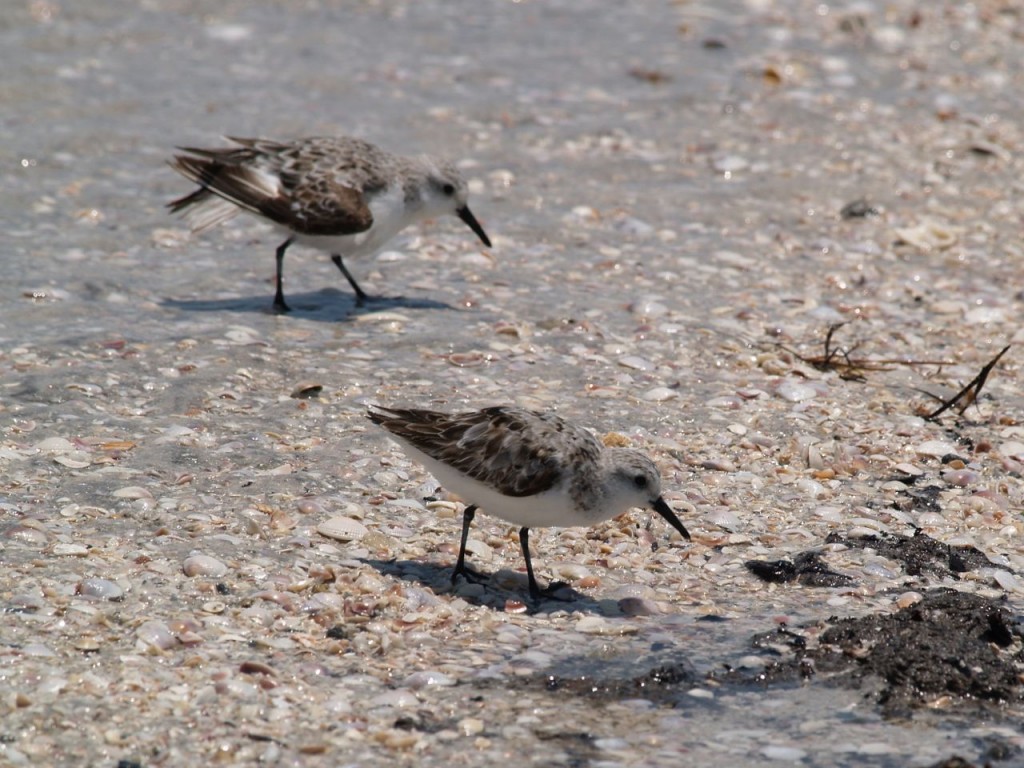
Mystery bird 4: I’m at a loss with this one. Some exotic game bird perhaps? Taken September 23, 2011 near the Nature Conservancy’s Great Salt Lake Shoreland north of Salt Lake City, Utah.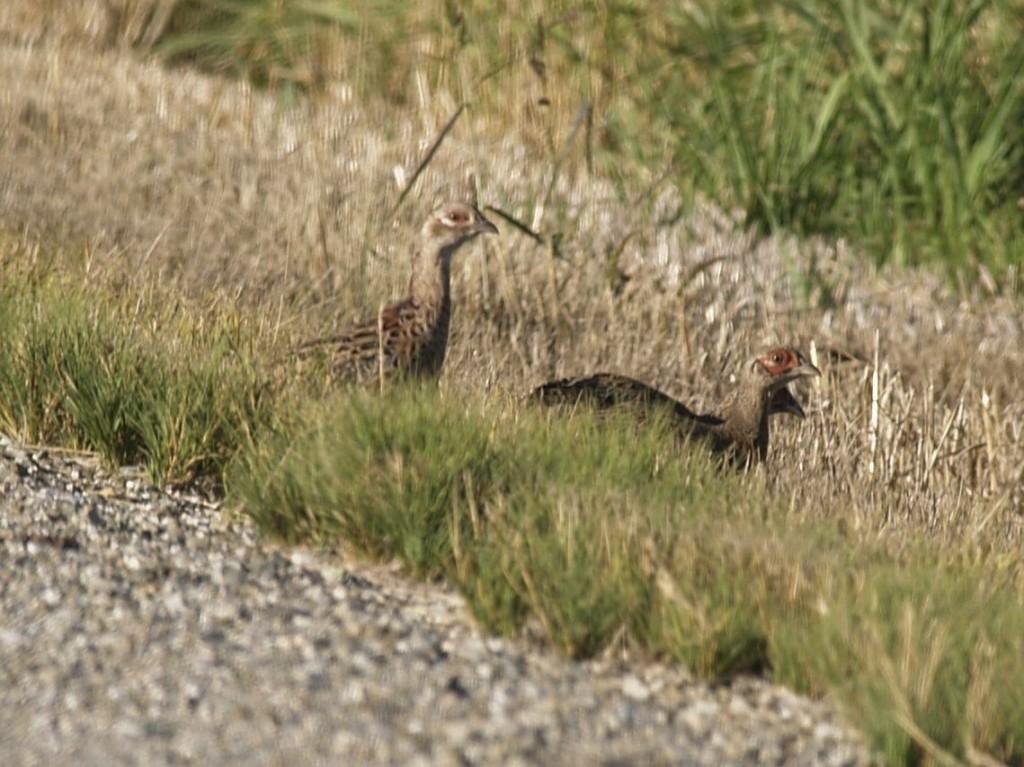
Mystery bird 5: I’m guessing juvenile red-naped sapsucker. Taken July 13, 2011 at Kootenai Falls near Libby, Montana.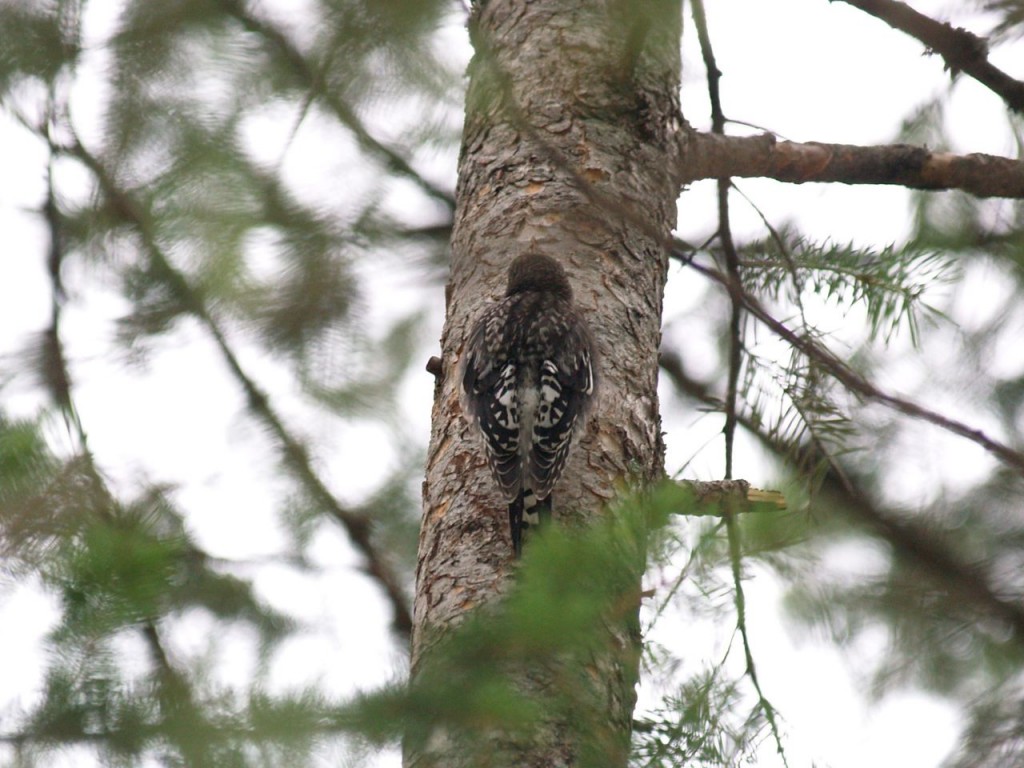
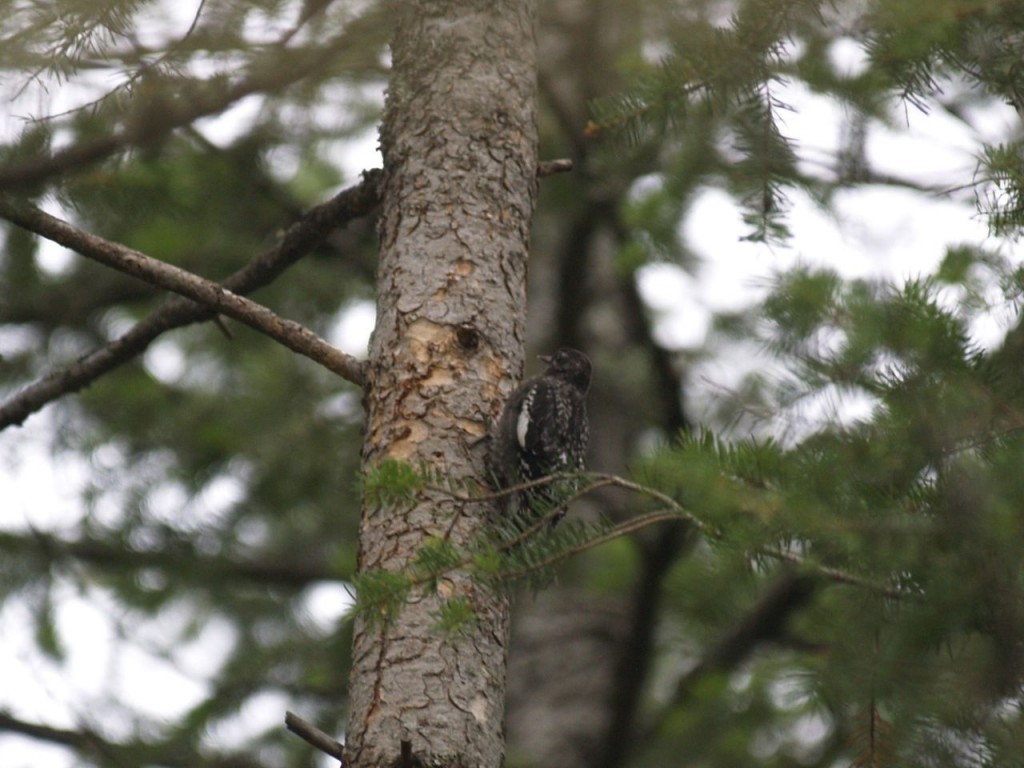
Collecting Acorns
This morning I joined several other members of Arlingtonians for a Clean Environment (ACE) to collect native acorns and other nuts in Lubber Run Park. The nuts are given to Growing Native which then donates them to state nurseries in the area to grow and plant to restore watersheds. That was the plan at least. Most likely due to the weather, there were not that many acorns, and those that had fallen had already been claimed by squirrels and other animals. Most of us ended up picking up a bunch of trash as we wandered through the park. In fact below is my haul. I make a much better trash collector than a squirrel. I found one viable acorn, a bunch of trash and recyclables, and one archeological find (sort of), a vintage Pepsi bottle.
Luckily other participants did much better than me. Overall, we had a pretty nice haul.
Then all the nuts had to be sorted though. It was a group effort to try to identify which type of oak tree produced the various acorns. Even consulting the books, we were still sort of guessing at some of them.
We sorted them as best we could, then bagged the various type acorns and other nuts separately to give to Growing Native.
Hopefully at least some of the collected nuts will be viable and produce saplings. At the very least, it was a nice couple of hours spent in a nice park, and we removed a bunch of trash.
Household Hazardous Waste Disposal
Previously I wrote, or ranted, about stupid smoke detector design, and at the end of the post I mentioned that smoke detectors have a small amount of radioactive material in them, and thus they should be disposed of properly. I didn’t say specifically how because it really depends on where you live. I live in Virginia, and I have since learned that there is no place in Virginia to dispose of them. My county’s website says they have no way to dispose of them and to try to return them to the manufacturer, but if you can’t find any other way to dispose of them, they can be thrown away in the trash. I contacted Kidde, the manufacturer, and they said they will accept them, you just have to mail the smoke detectors to them. The customer service representative I spoke to said just put “for disposal” on the package, and they will take care of them. I actually had a total of three to return because I had the malfunctioning one plus two ones I had originally bought before I had the hardwired ones installed. So last month, I mailed three smoke detectors back to Kidde. It cost me $6.15, but I now have a clear conscience. This may seem a bit much to some people, but I am an environmental engineer. My career has mostly been dedicated to cleaning up and properly taking care of human and hazardous waste. It has also been about dealing with contamination when waste was not taken care of properly, so there is no way I am going to improperly dispose of waste unless it is completely impossible not to do so.
Here is a fun quirk of United States environmental law, my smoke detectors are non-hazardous because they were used in my house. Those same smoke detectors, if used in a commercial or other non-household setting, are hazardous. Hazardous waste in the US is regulated through the Resource Conservation and Recovery Act (RCRA, pronounced rick-ra). Under 40 CFR §261.4(b)(1), “household waste, including household waste that has been collected, transported, stored, treated, disposed, recovered (e.g., refuse-derived fuel) or reused” is considered to be non-hazardous and exempt from RCRA regulation. There are a bunch of reasons why this exemption is in RCRA, but how you treat your legally-not-hazardous, but technically-hazardous, household waste comes down to a bit of just because you can do something, doesn’t mean you should. However, disposal of household waste is also governed by state and local regulations. Just because federal laws allows you to dispose of household hazardous waste in the trash, does not mean your municipality will because they are the ones who actually have to deal with the waste.
Most people know that fluorescent bulbs contain a small amount of mercury, and thus if you ever break one indoors, you should open the windows and leave the room while the mercury volatilizes. It is because of this mercury that most (or possibly all) municipalities and/or waste disposal companies state that fluorescent bulbs should not be put in the trash. The vast majority of trash in the US is sent to landfills and the rest to incinerators, and mercury does not belong in either of these type of disposal facilities. Also, and just as importantly, the bulbs can easily be broken during transfer from your trash can to the truck, while in the truck (especially if it compacts), at the transfer station, at the disposal site, and all the places in between. If it breaks, the workers can be exposed to the mercury, and thus it is not just about protecting the environment but also the workers.
There is more household waste that is technically hazardous. Aerosol cans can become explosive if punctured. Various cleaning, home maintenance, and vehicle fluids routinely used in household are hazardous to the environment. Conversely, both prescription and over-the-counter (and for that matter illicit) unused drugs should be disposed of in a seal container and put in the trash. Putting unused drugs in the trash is far better for the environment than putting them down the drain where they will eventually get into the waterways. Wastewater plants are not designed to remove chemicals like drugs, but that is a post for another day. [I suppose if someone is trying to dispose of their illicit drugs it is most likely because the police are raiding their house, and they are really not thinking about the environment but about jail, but I still don’t want to drink water with trace amounts of cocaine because some druggie upstream of my water treatment plant was trying to evade arrest.]
The point of all this is, think before you toss something in the trash. Spend a little time on your municipalities website, as most now have them, educating yourself on what can and can’t be thrown in the trash and where things that can’t be thrown in the trash can be disposed. While you are at it, educate yourself on what things can and can’t be recycled in your area. There may be a recycling market in your area for something you didn’t even realize.
Cats Laying on Weird Things
I have had cats for a couple of decades now. I don’t fully understand them and never will. One reason why is they sometimes lay on the strangest things. I grasp that they like to be on high things because the better to survey their domain or something. Sometimes that can simply mean laying on top of a book, which puts them all of one inch higher, but whatever. Also, they like to lay in sunbeams, but who doesn’t, especially when it is chilly. However, sometimes they lay on things that just seem plain uncomfortable. This morning I found Beatrice laying in a sunbeam, which I get, but using a rock as a pillow, which I really don’t get.
Last year, my now-late cat Puck decided to lay on top of a dustpan, which I seriously don’t understand. Then again, Puck thought basset hounds made excellent pillows when they stopped moving, although I actually agree with this opinion.

